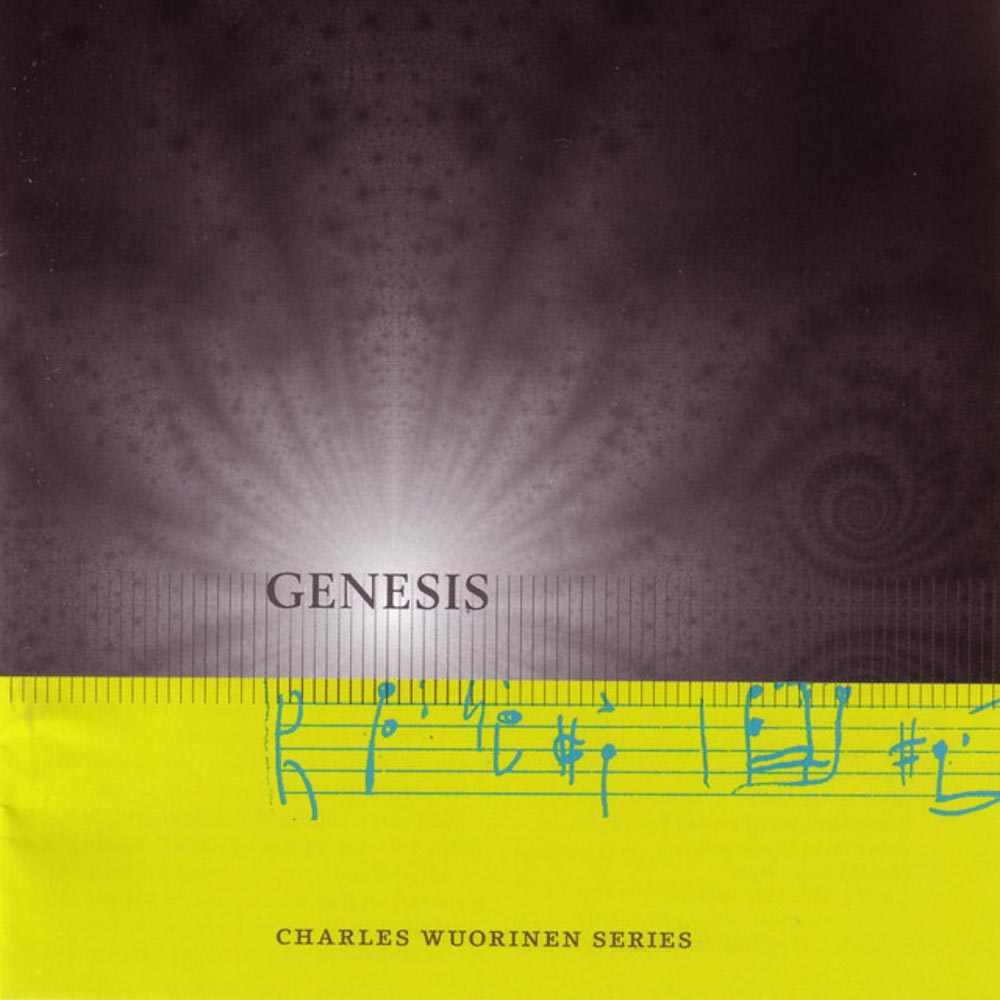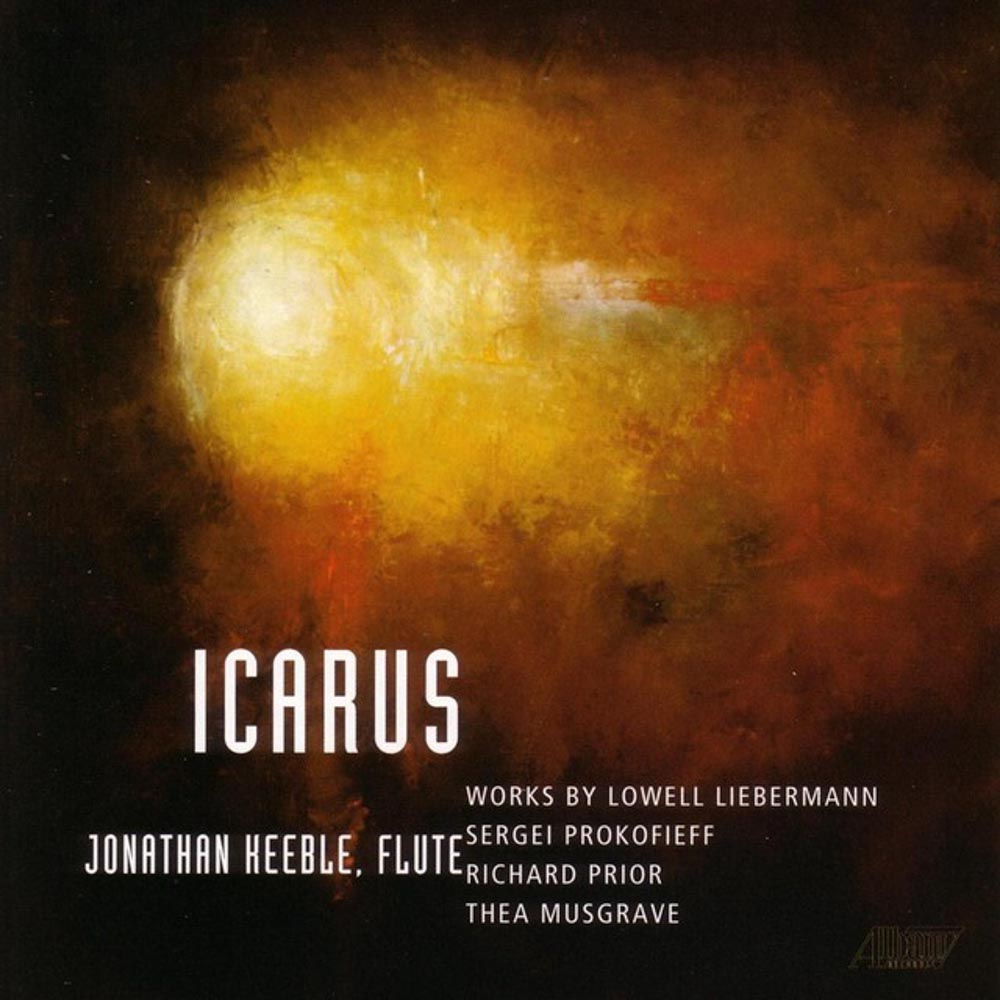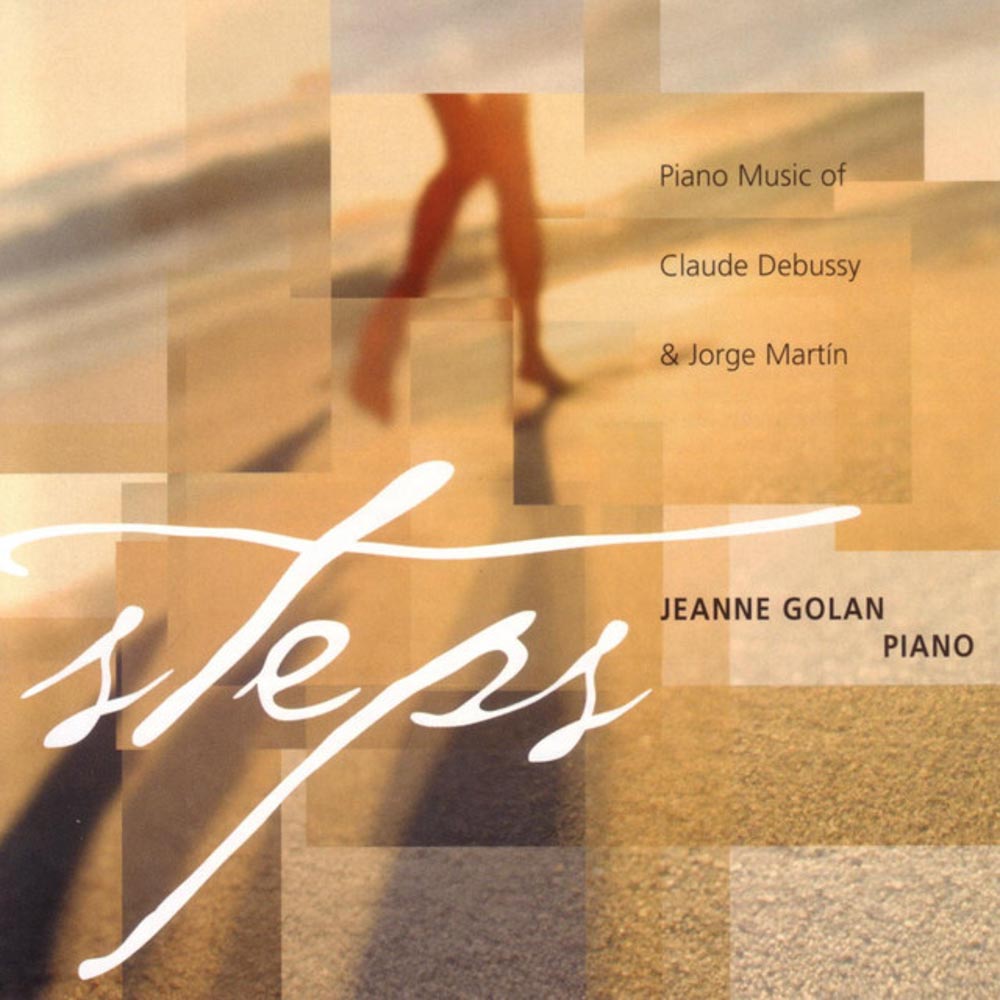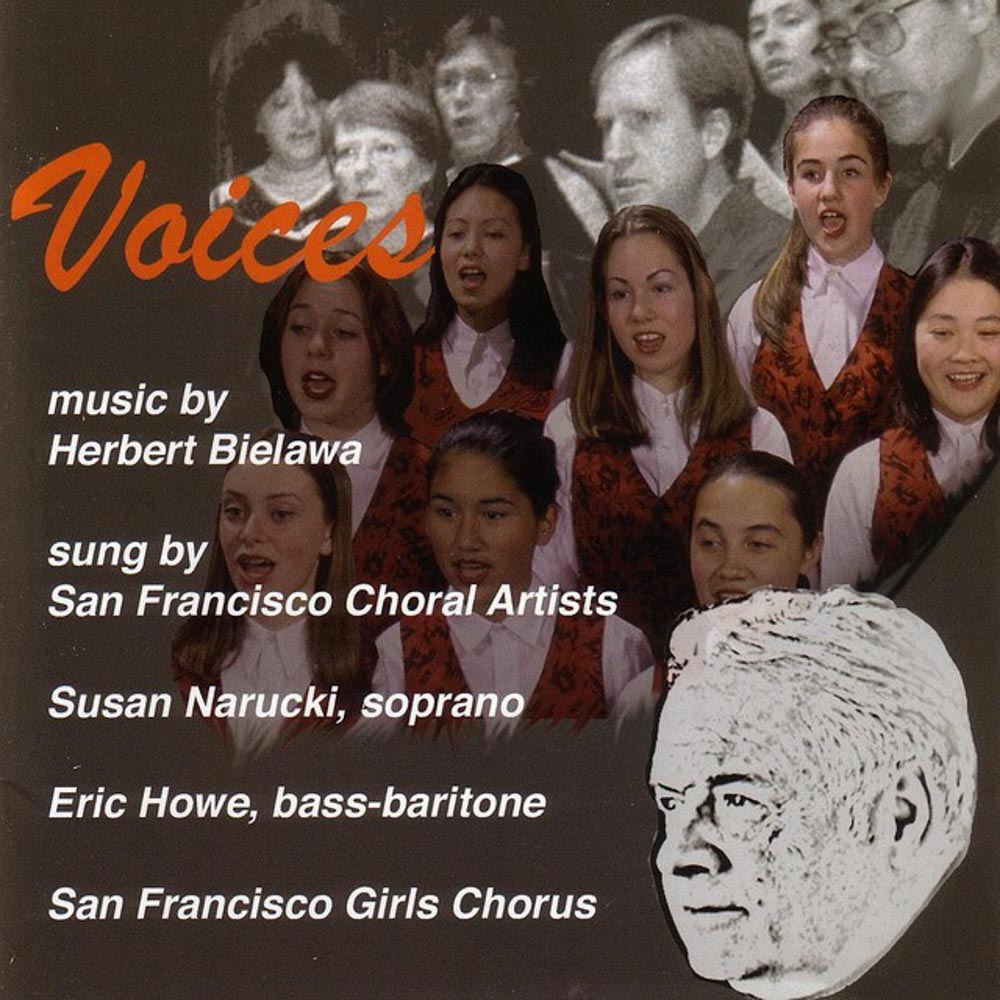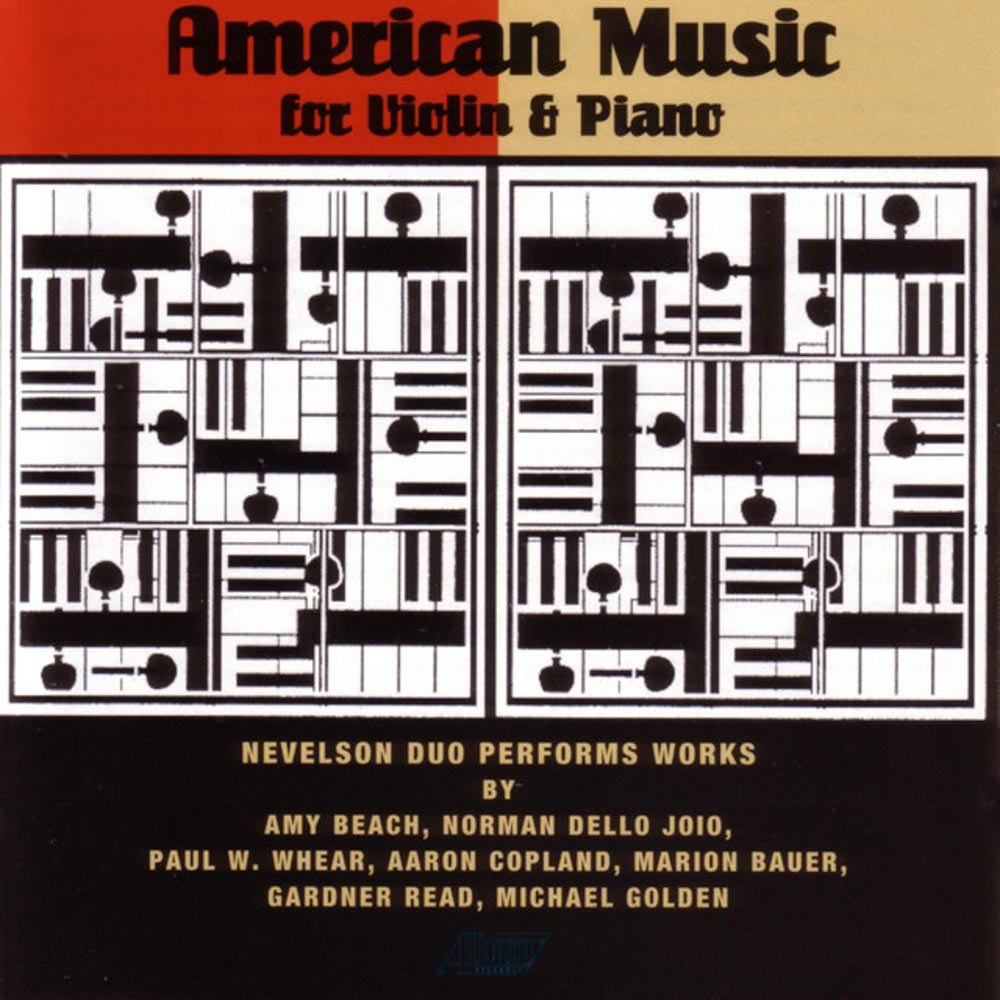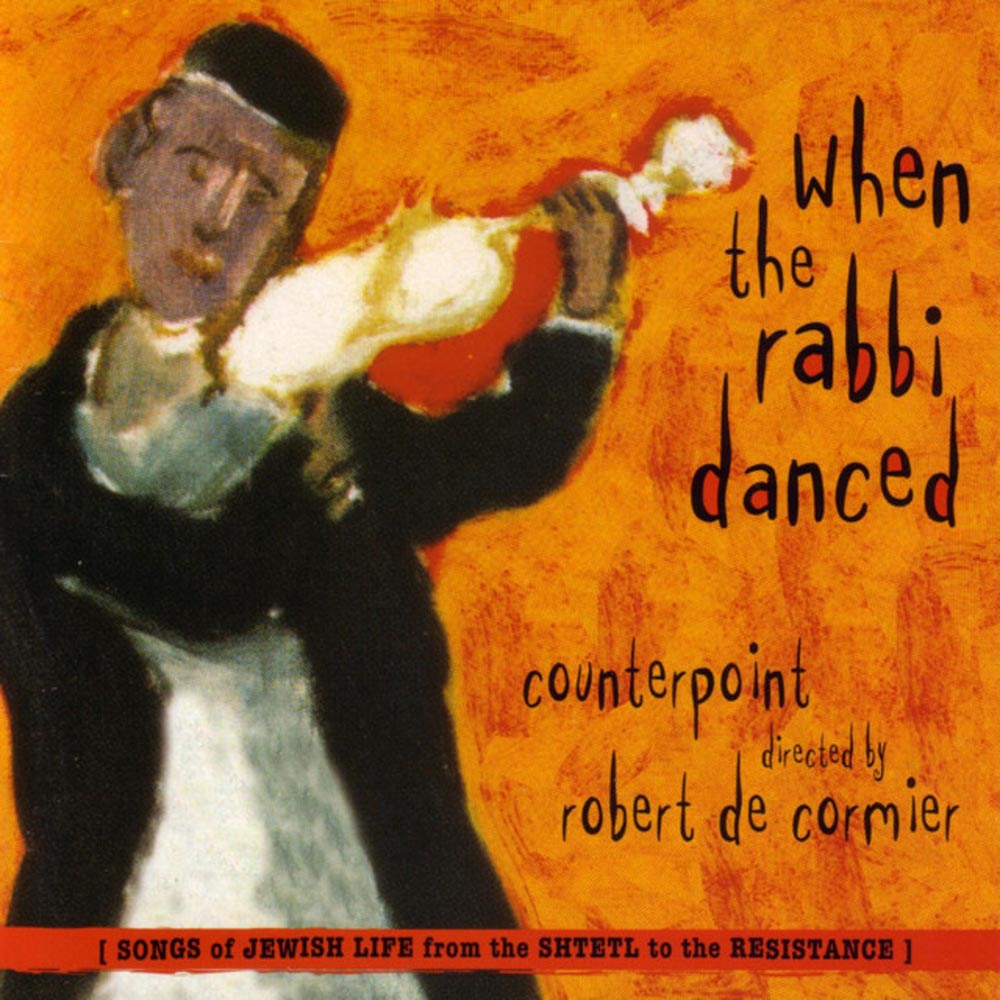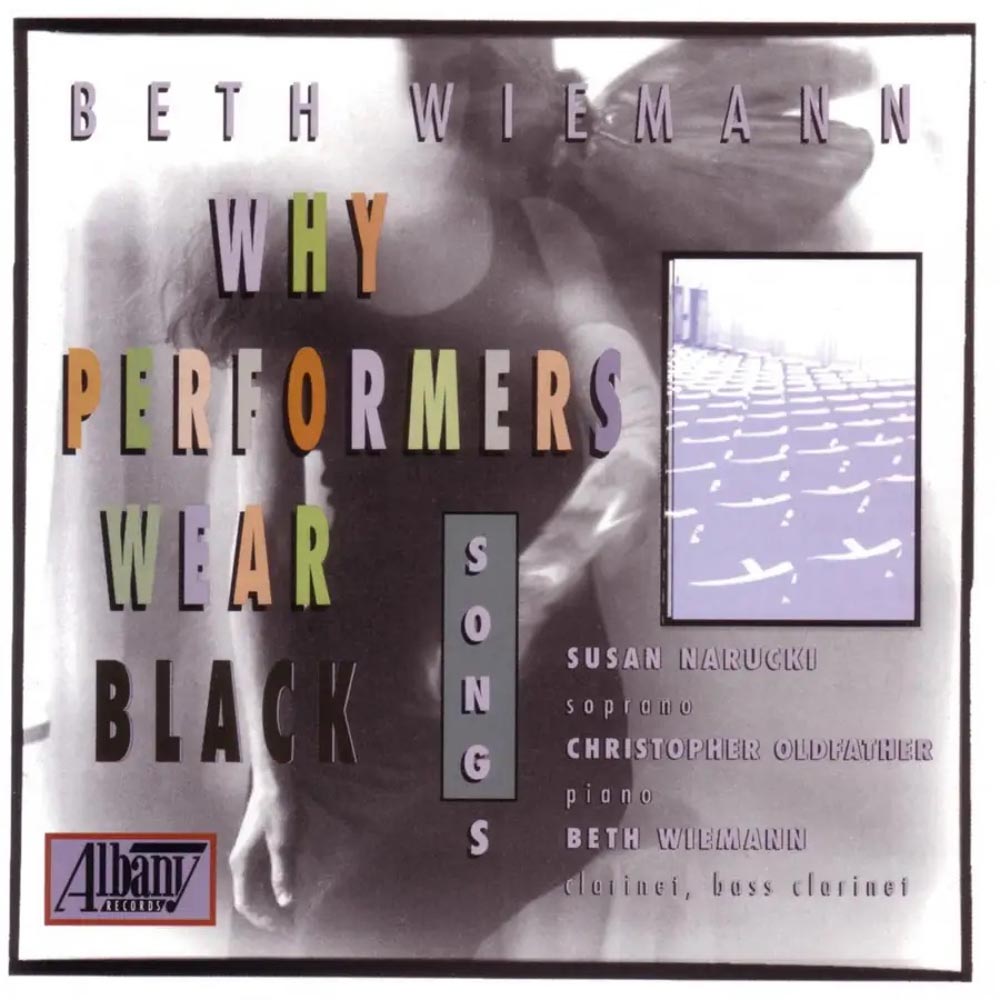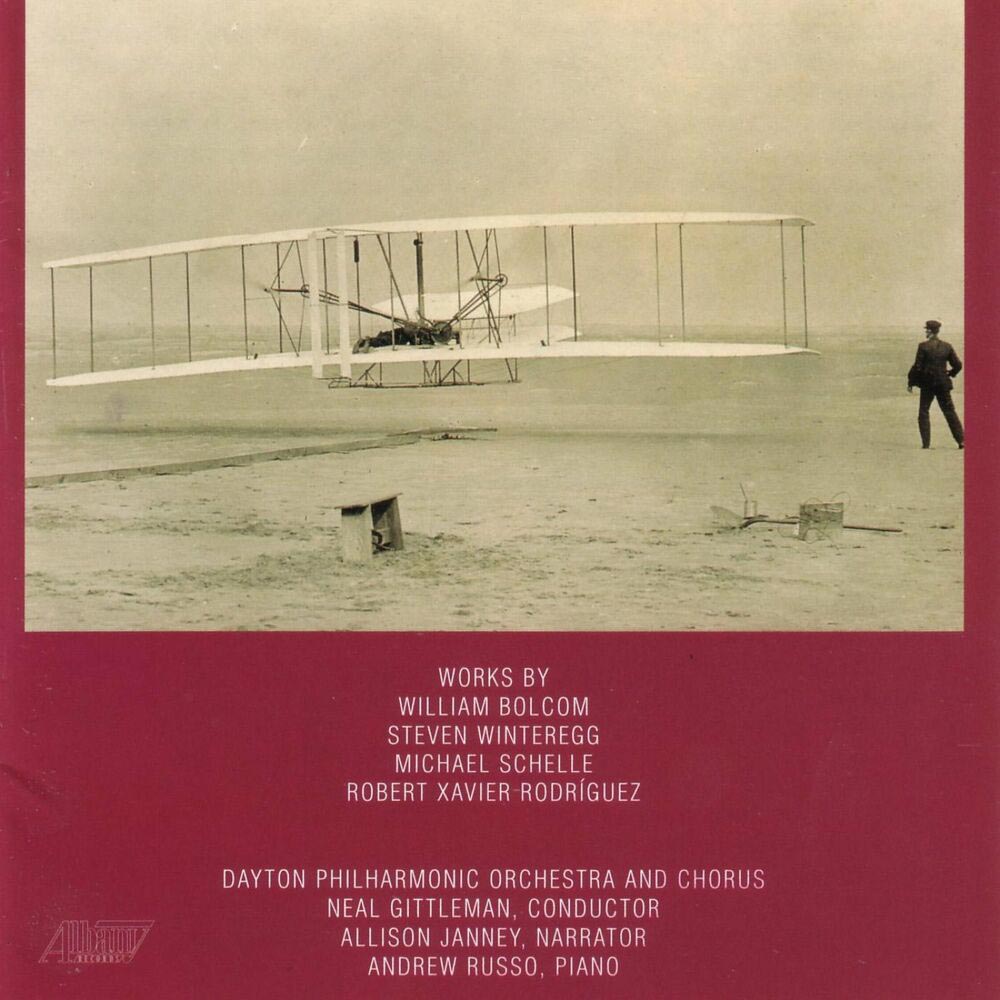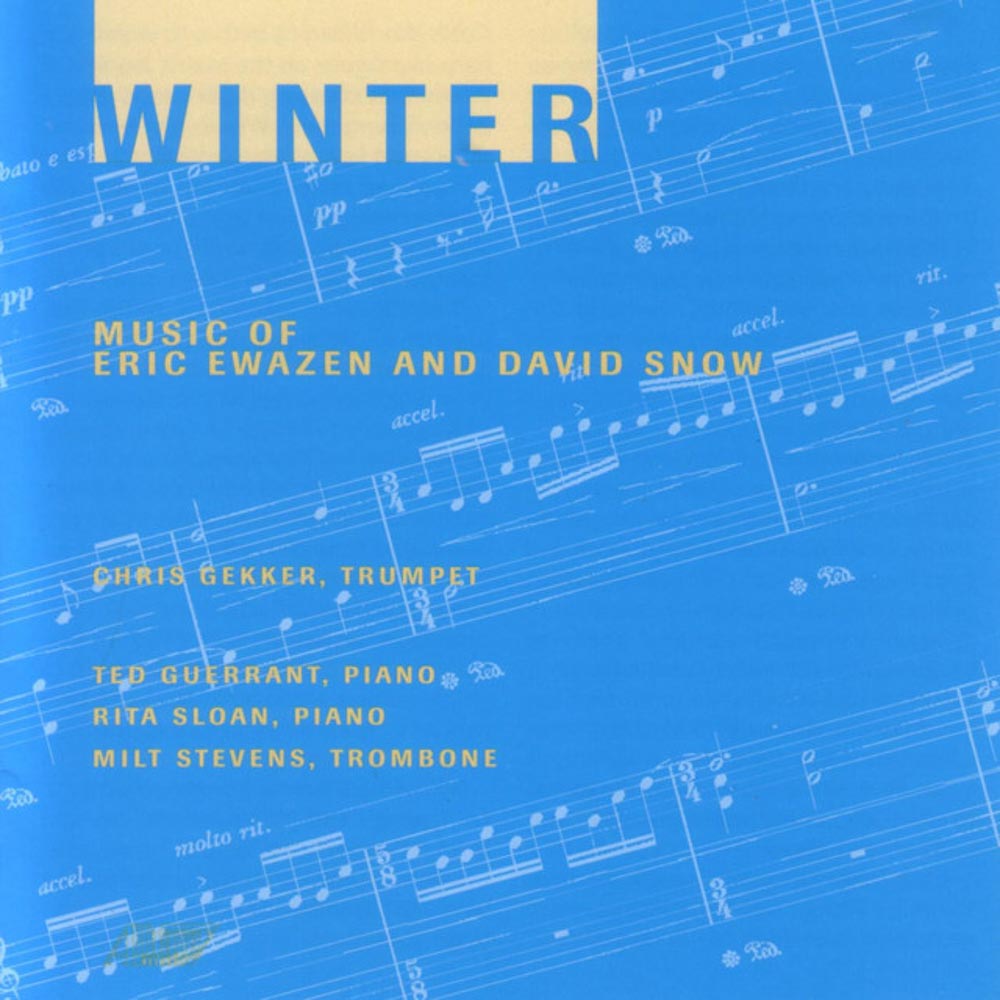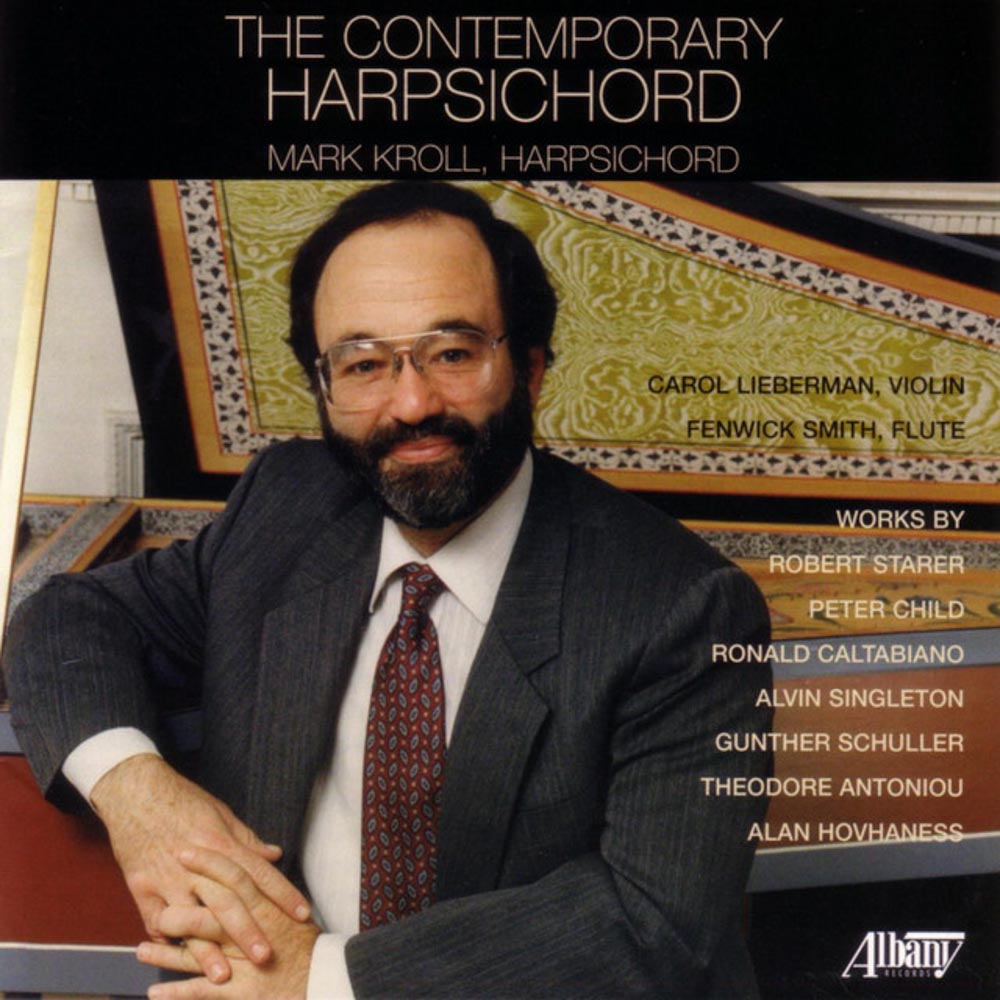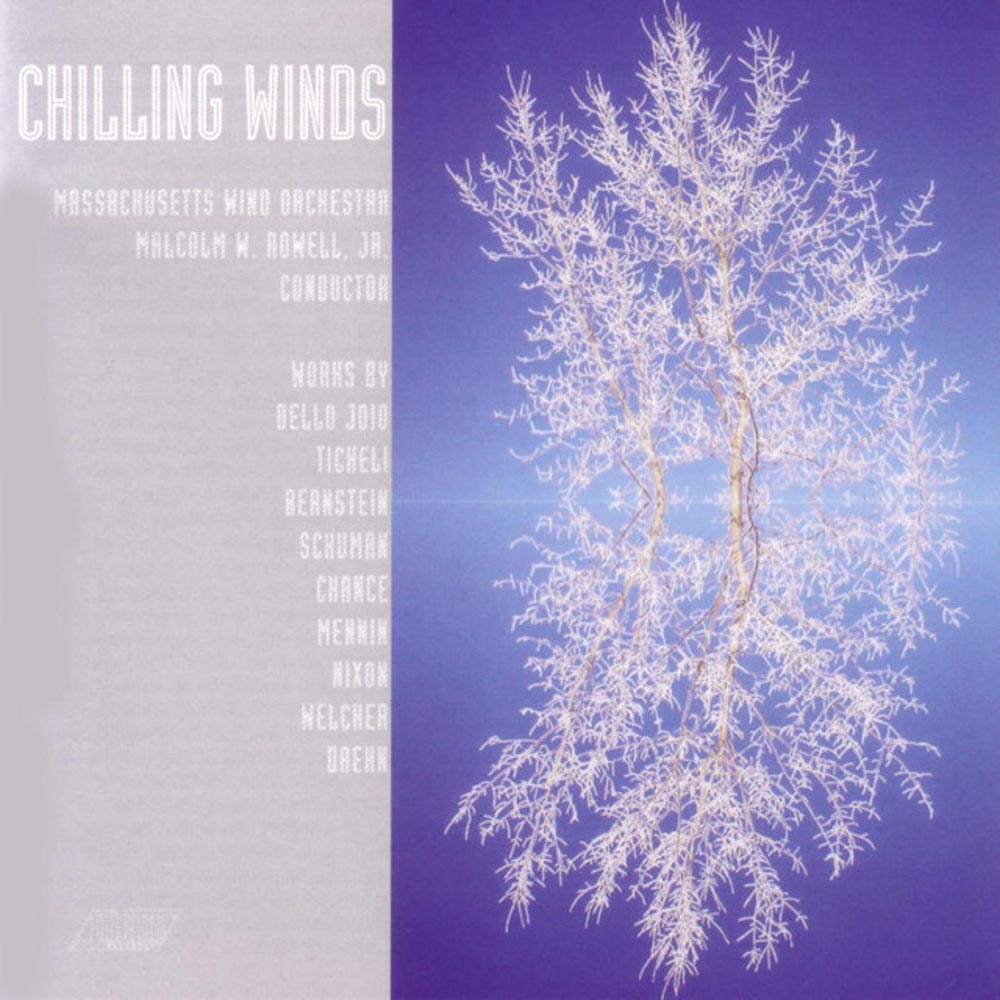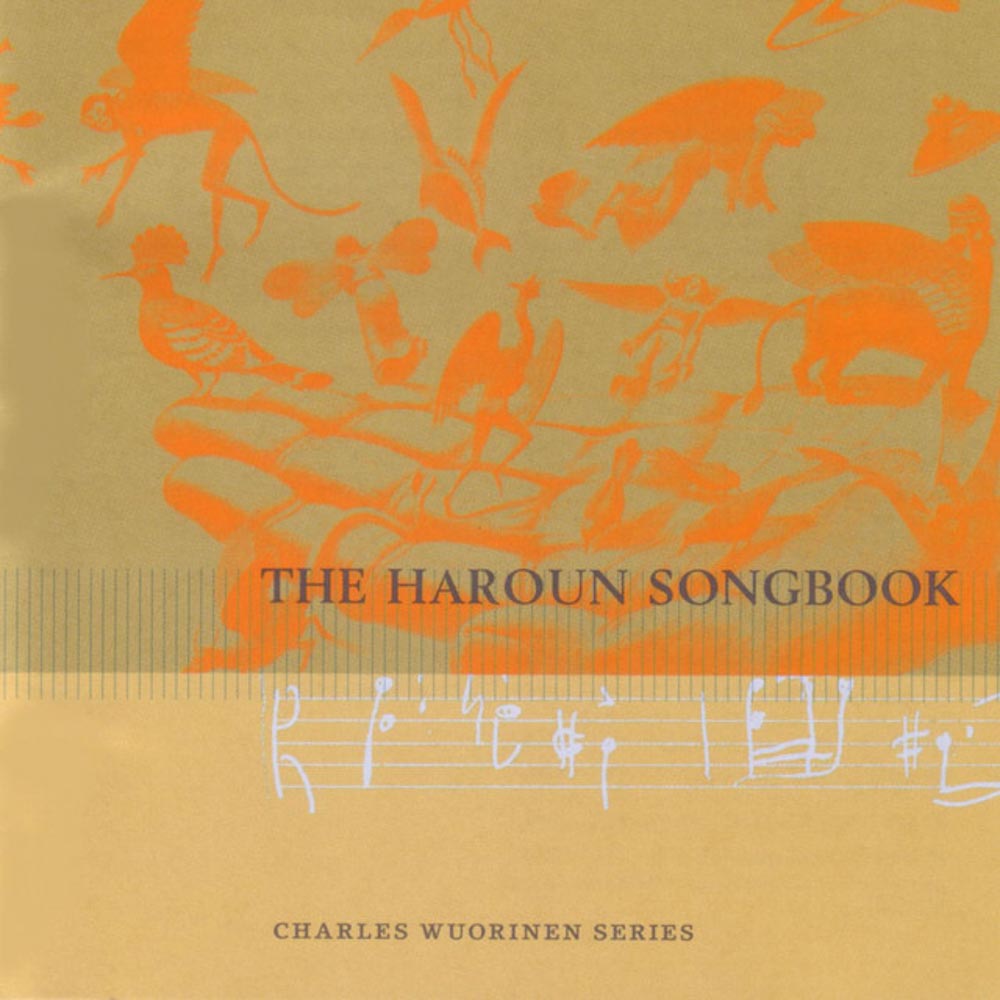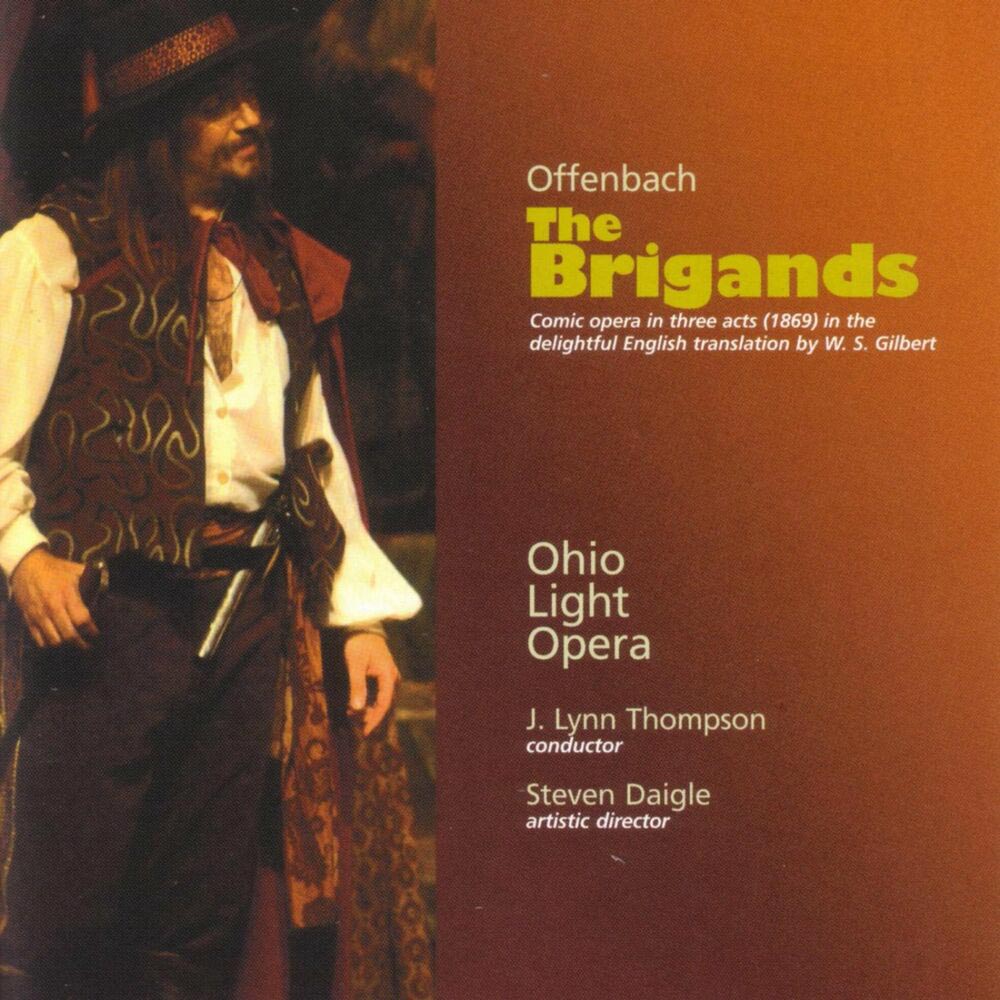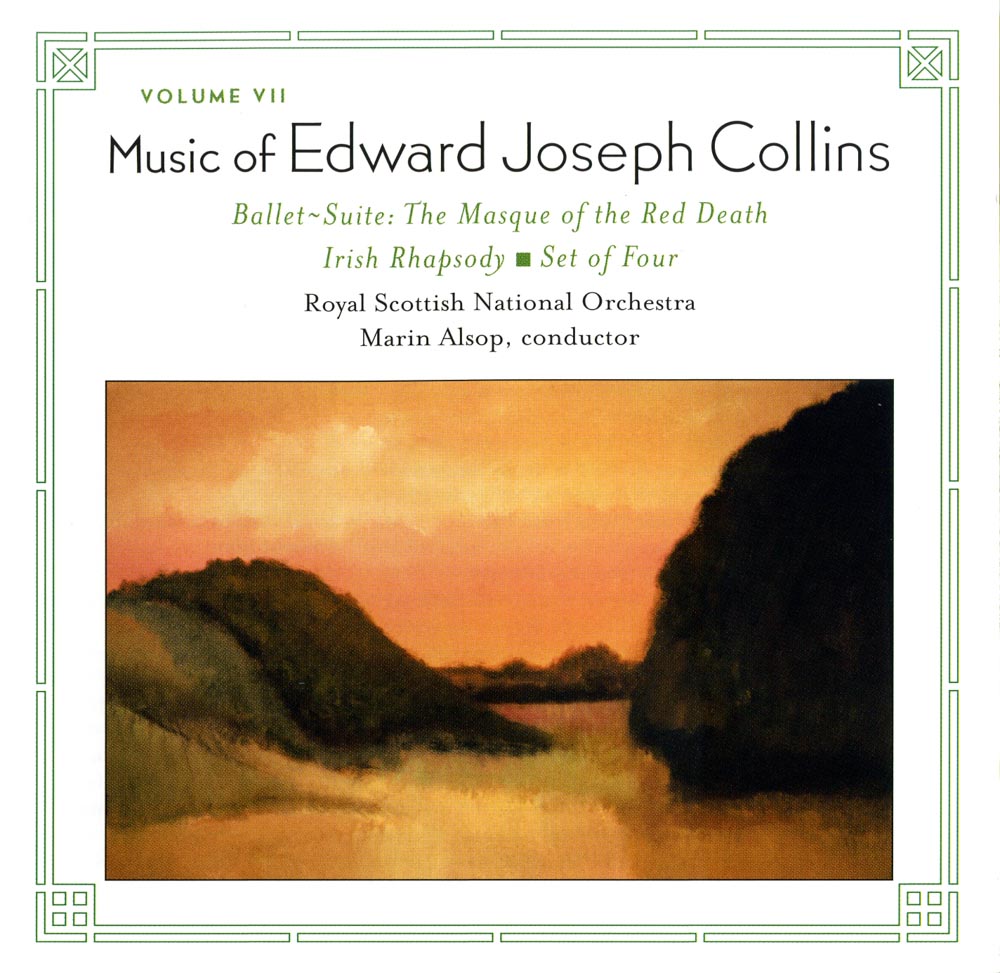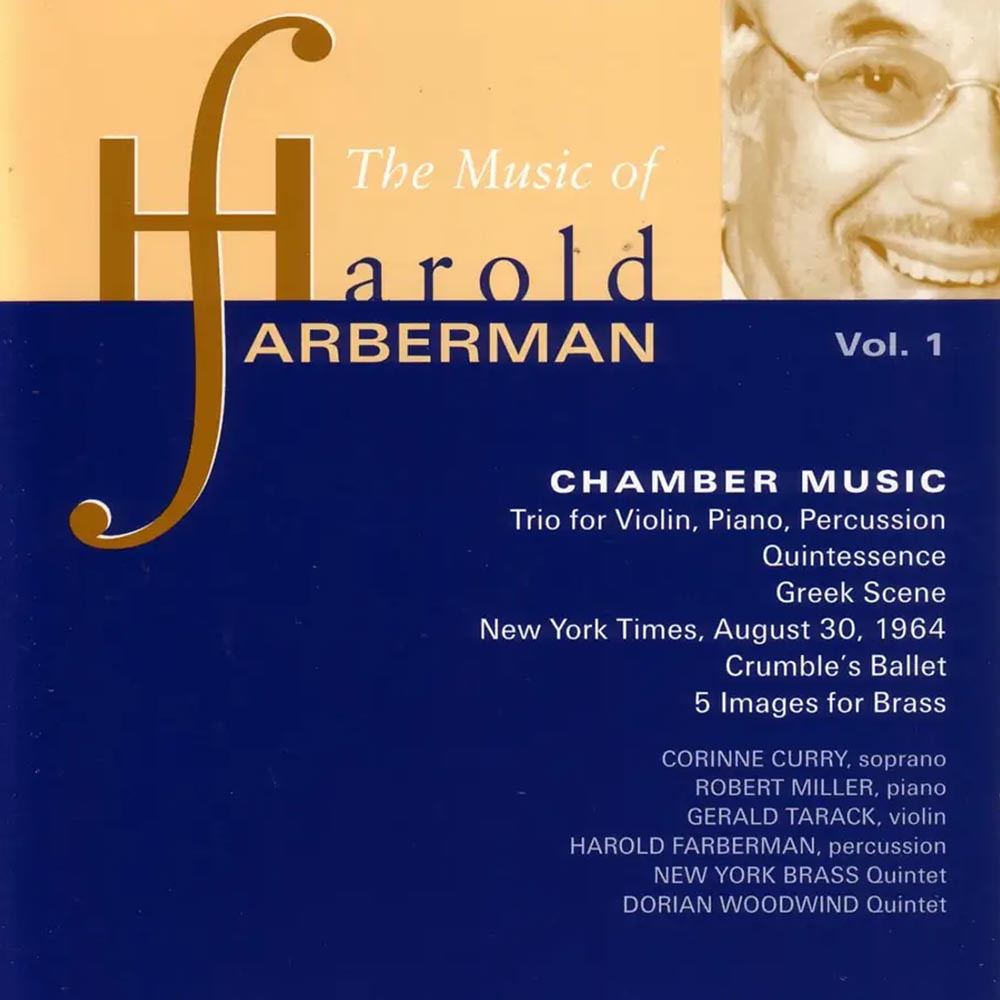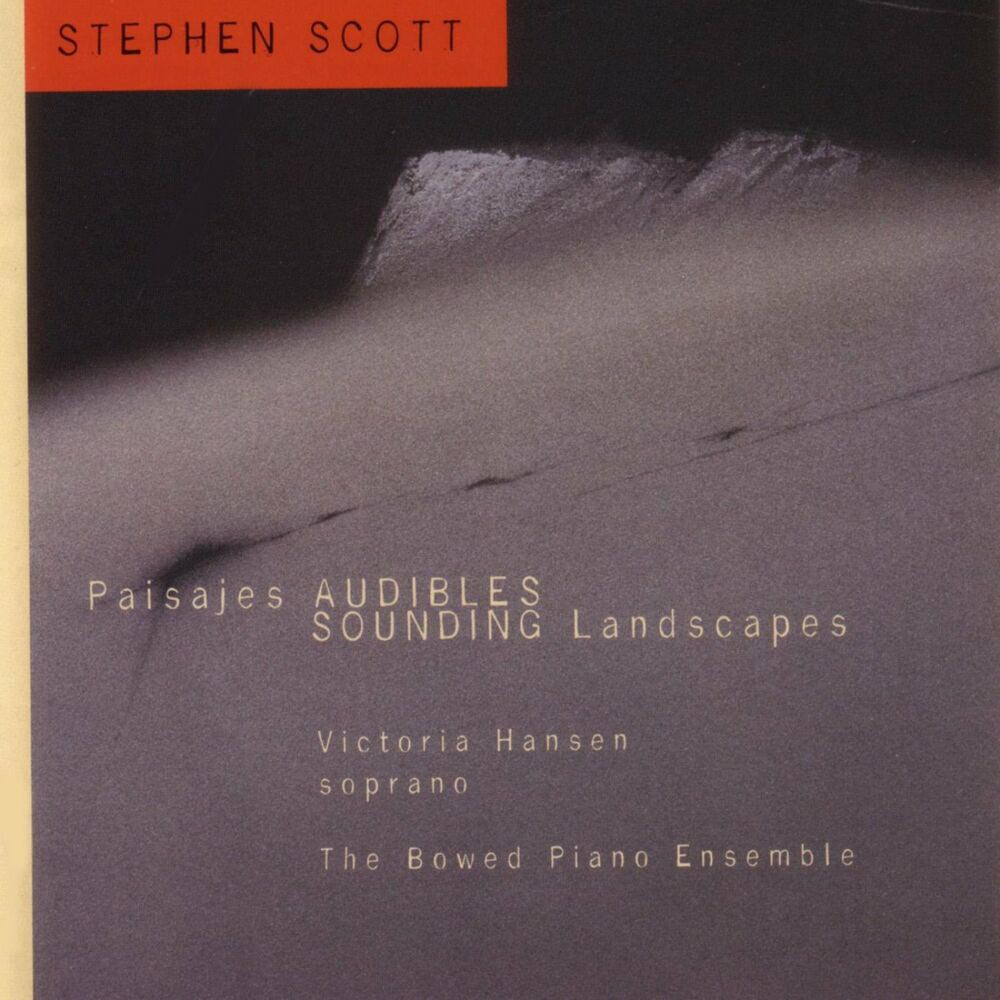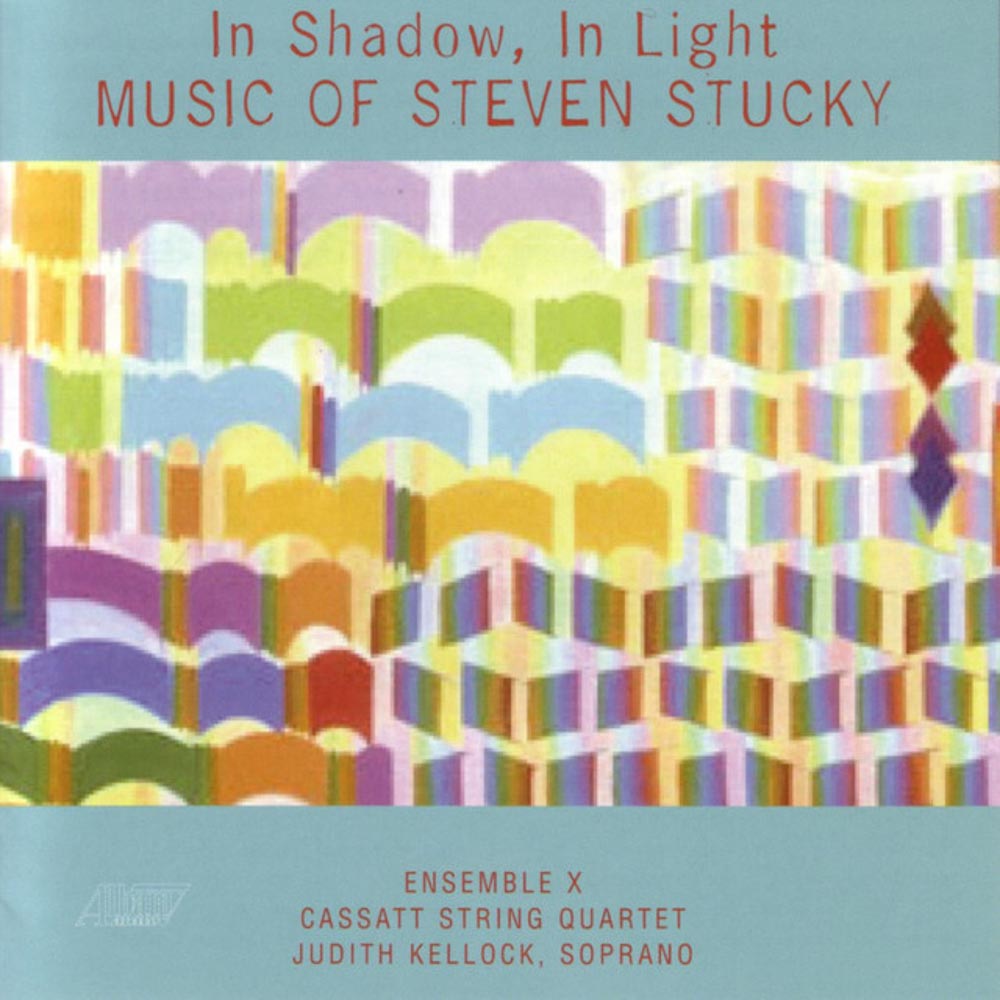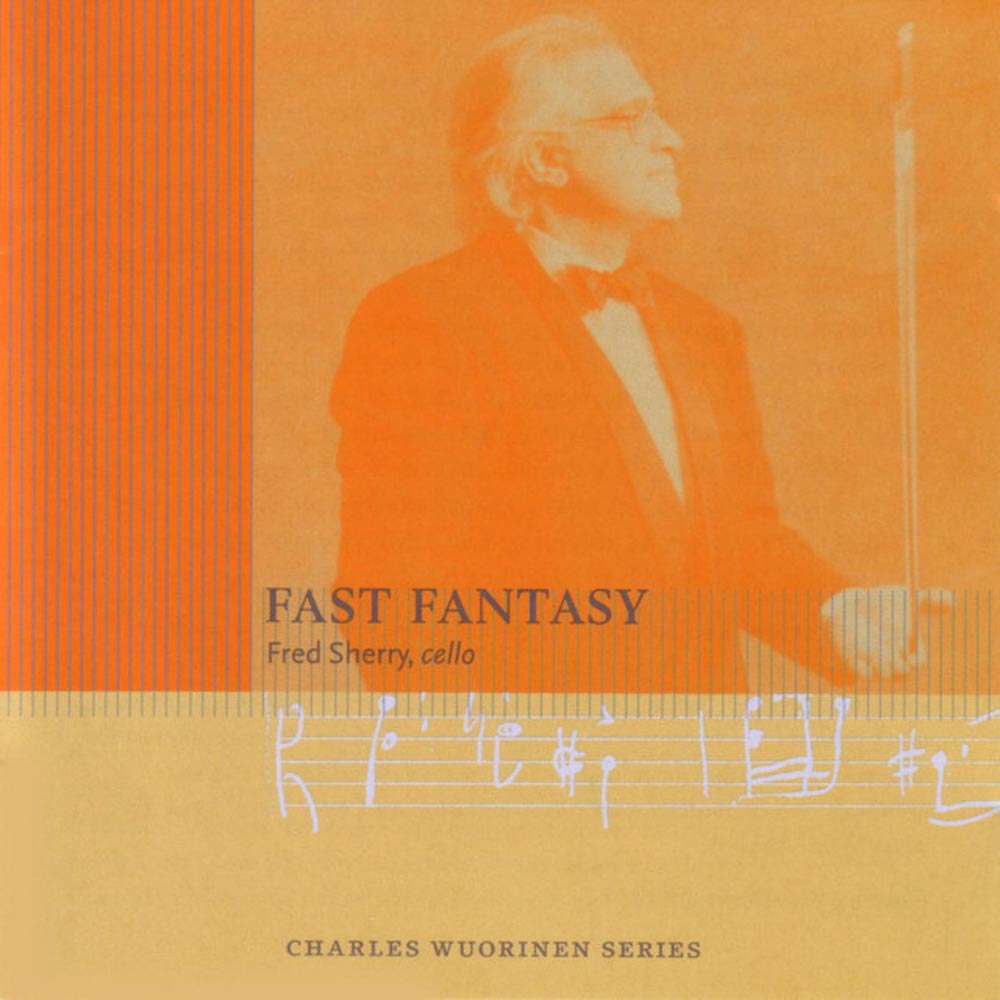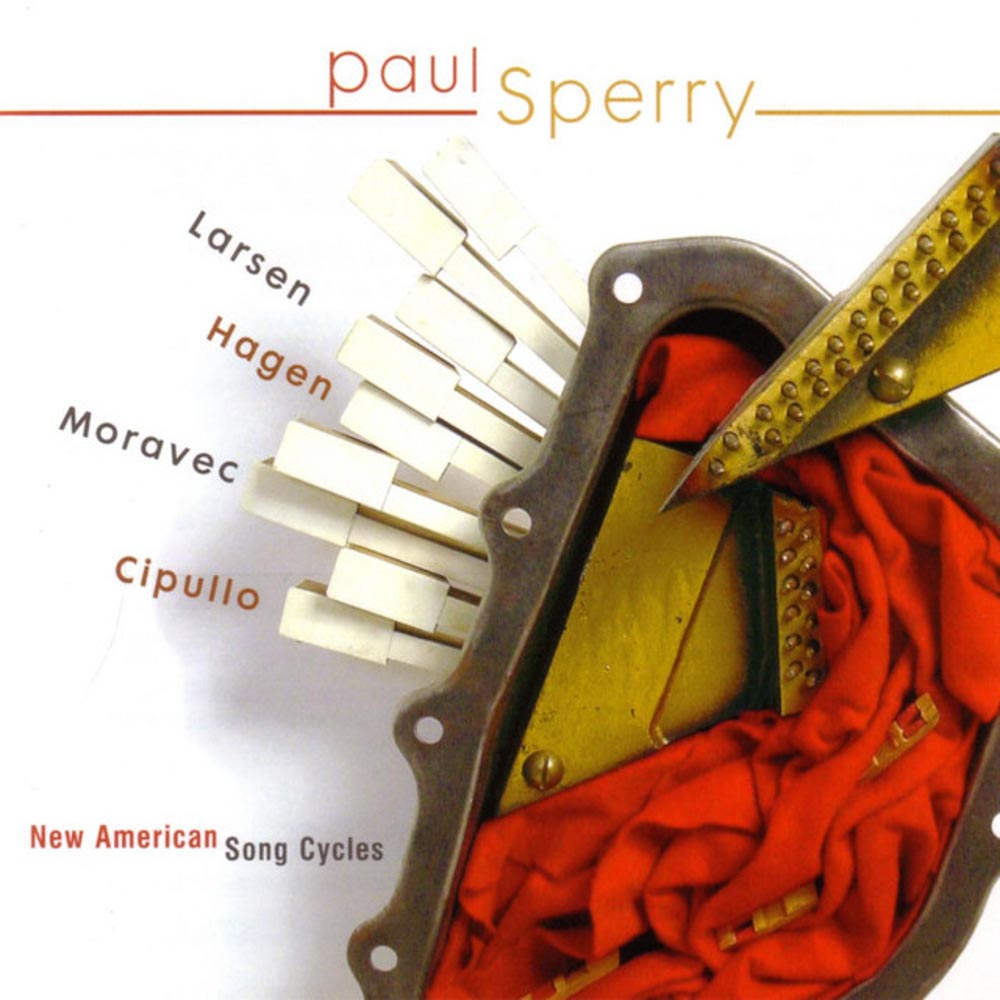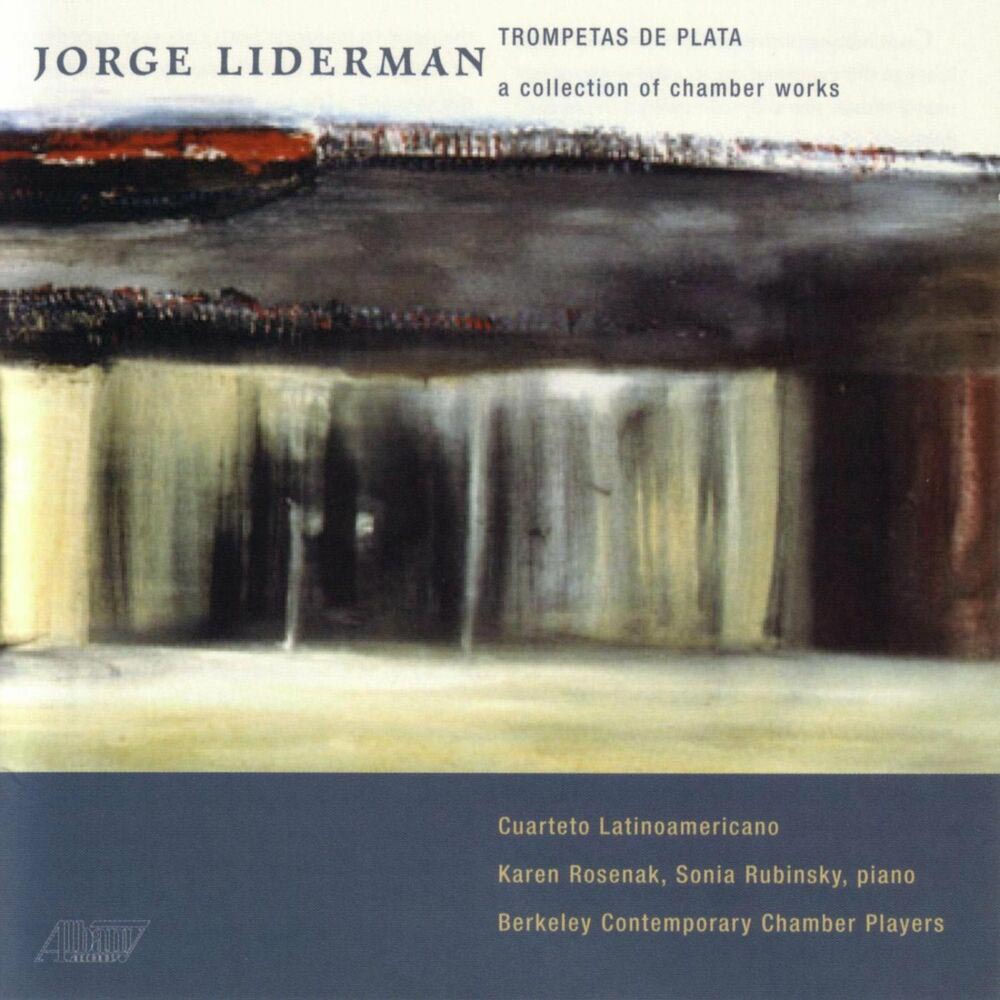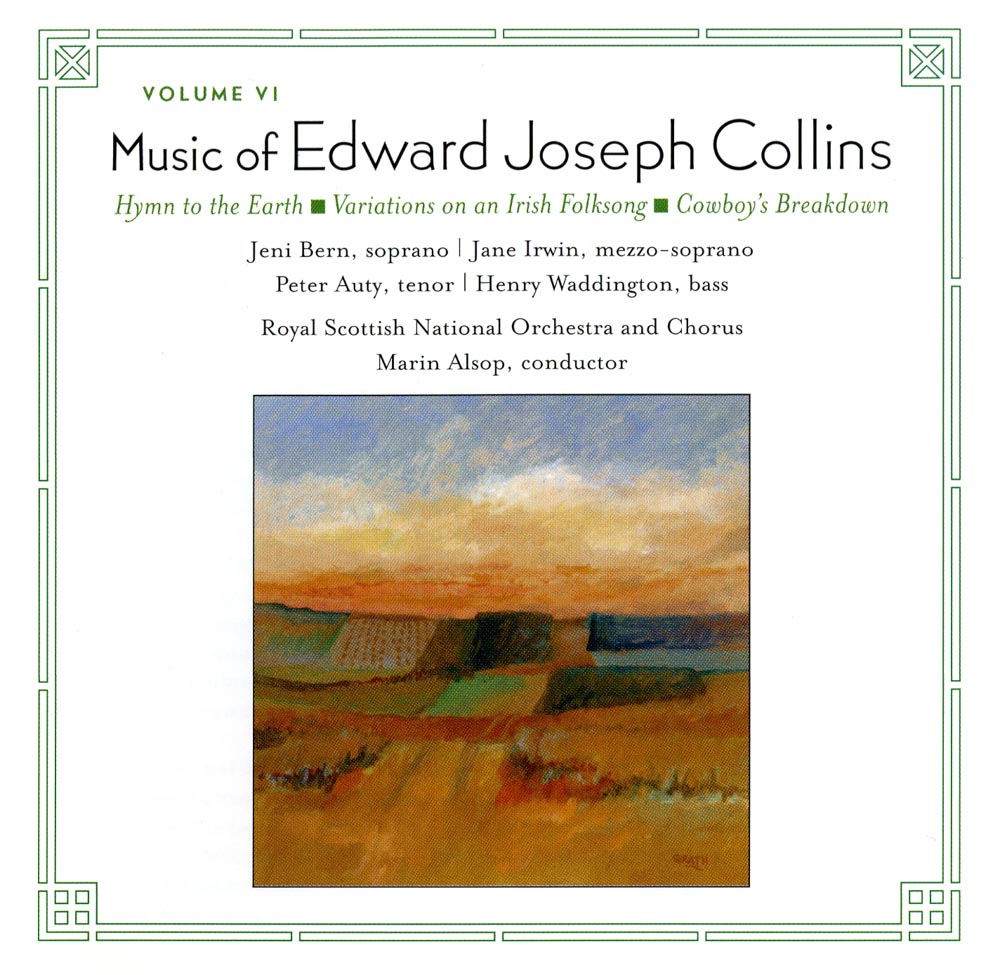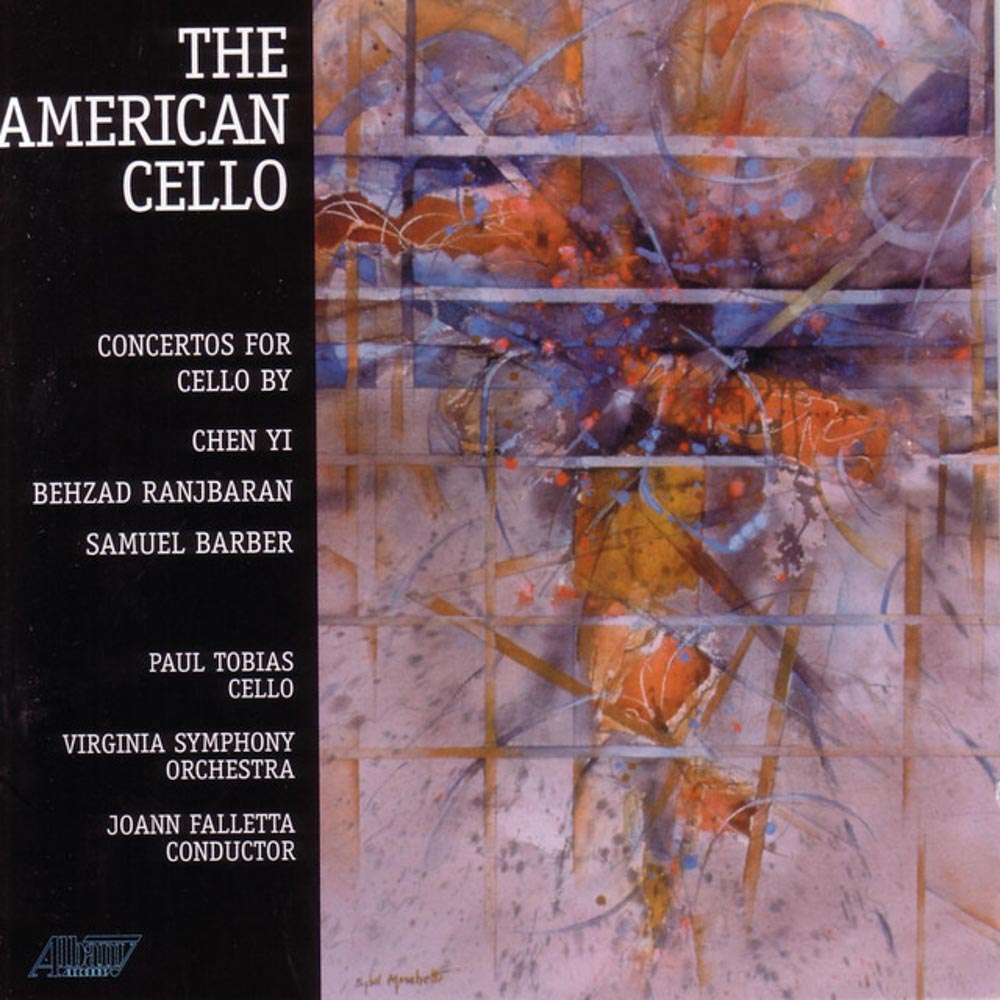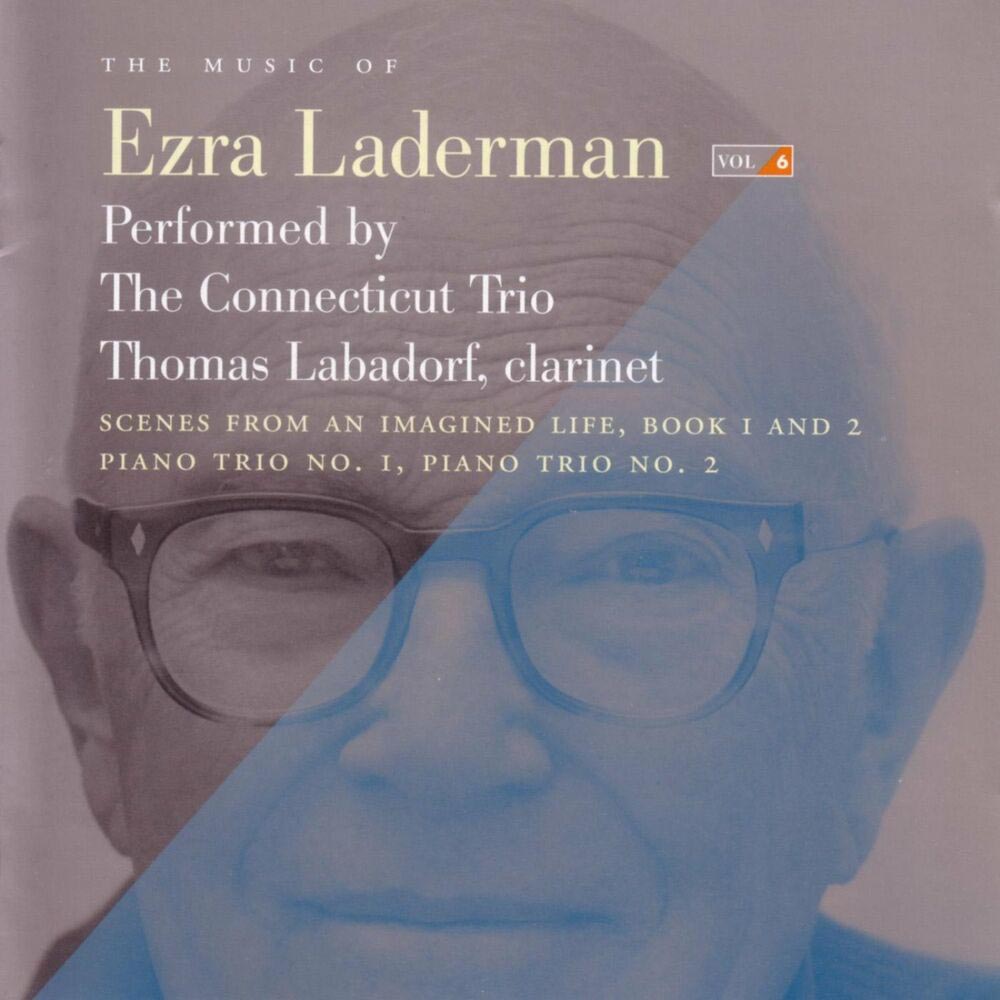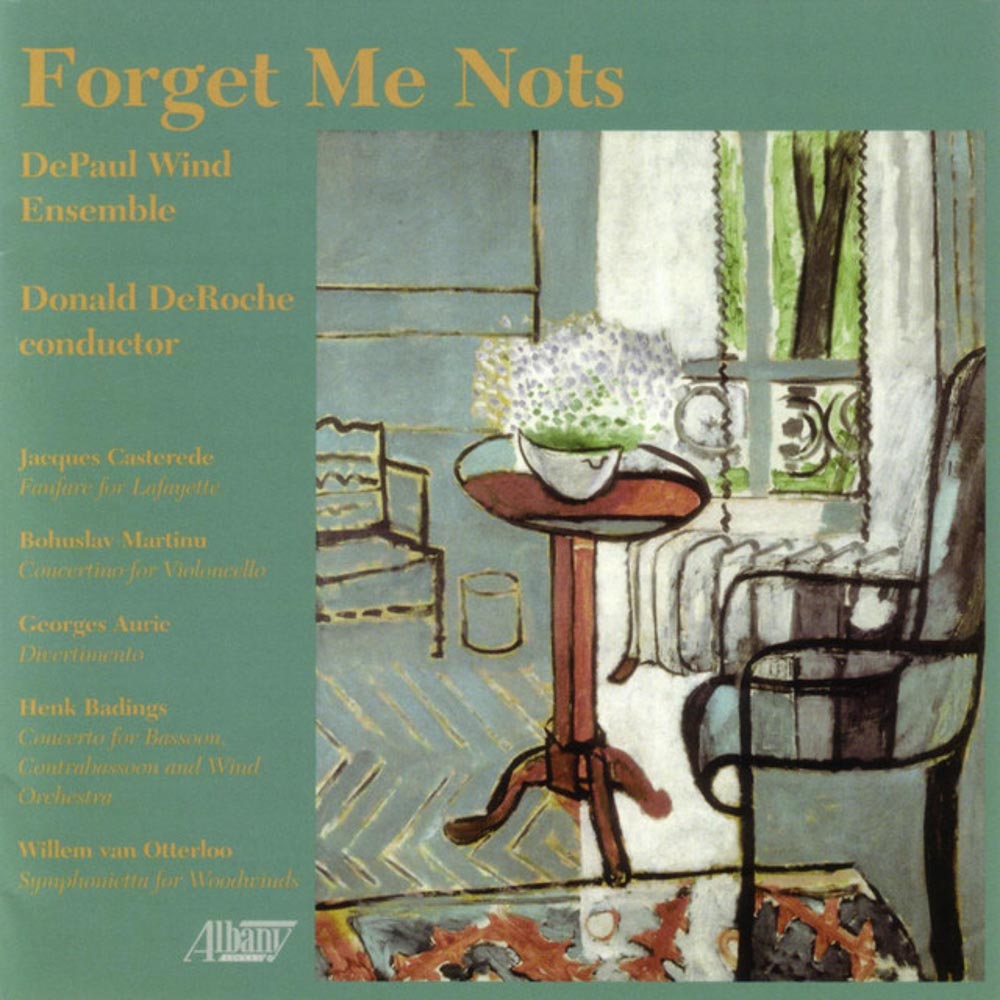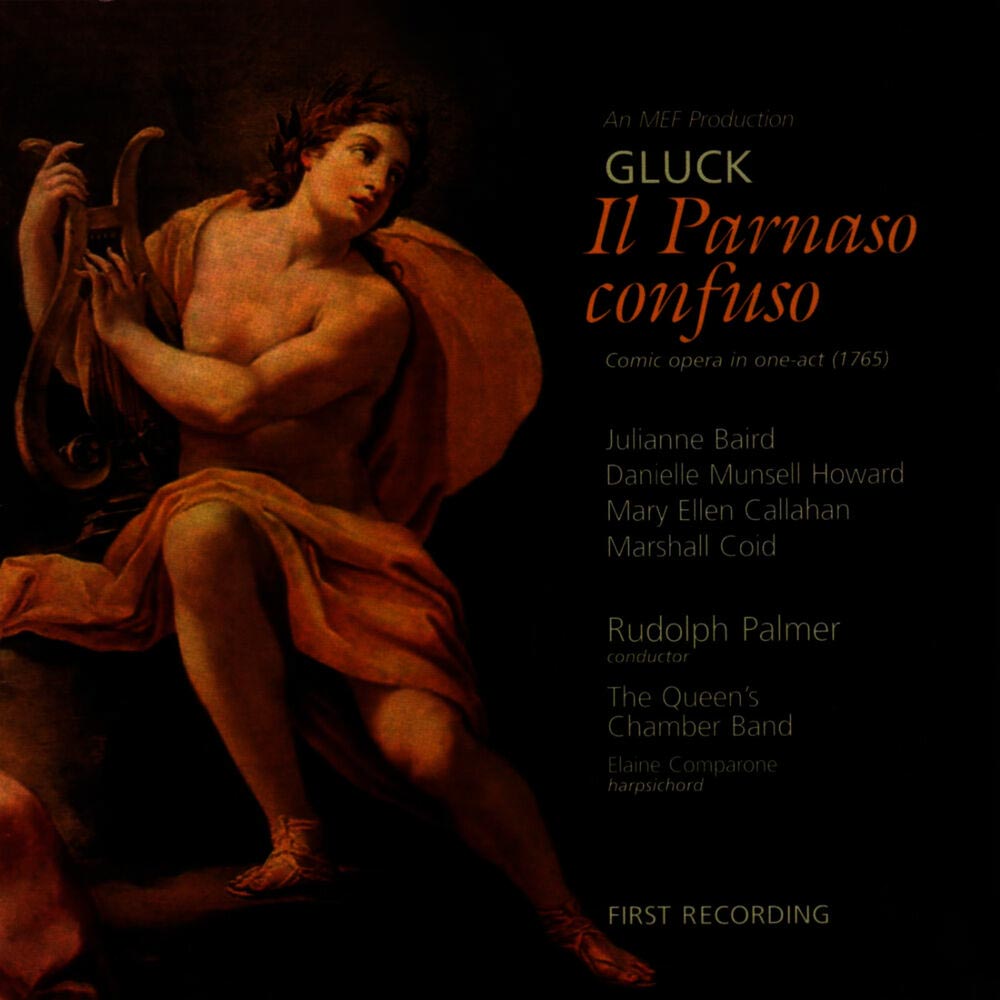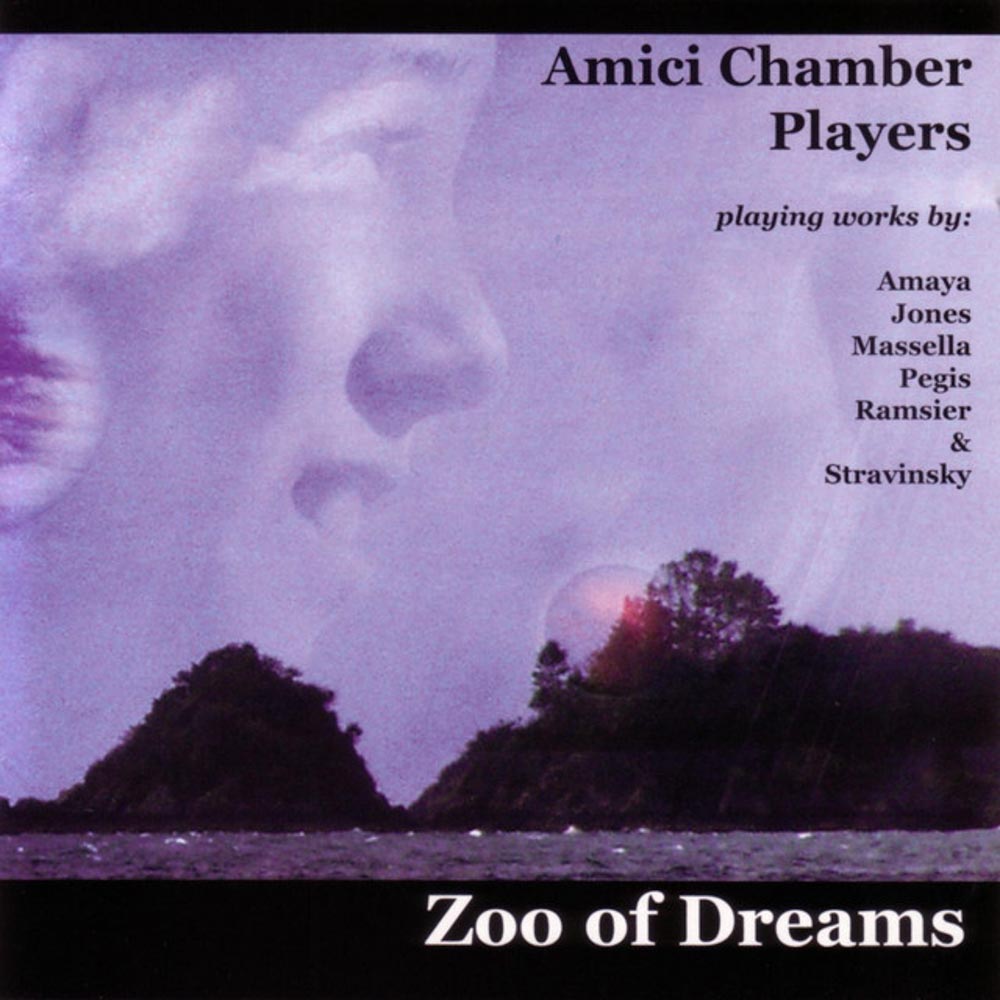Catalog #: TROY0678
Release Date: August 1, 2004VocalHoward Stokar writes: "Religion, specifically the Judeo-Christian continuum, is integral to Charles Wuorinen's view of the world and his own work as a composer. The Latin Mass for the Restoration of St. Luke in the Fields was written to celebrate the rededication of a church in lower Manhattan which had burned to the ground on the night of March 6, 1981, and was subsequently rebuilt. The work is divided into seven sections: the first and last are purely instrumental, the central five compose the Kyrie, Gloria, Sanctus/Benedictus, Angus Dei and a Communion motet. The motet is a setting of words from St. John which are inscribed on the rood screen of the original church. The Mass is a central work in Wuorinen's catalog. It is actually a Missa Brevis as it does not include the Credo. The reason for this is practical: St. Luke's requires congregational singing of the Credo. The mass was performed for the first time on November 20, 1983 at St. Ignatius of Antioch, New York City. A Solis Ortu and the reworking of the Josquin motet Ave Christe for piano were composed for Stephen Fisher, then President of C.F. Peters Corporation. Fisher, a fine amateur photographer, had given Wuorinen a photo of the sun rising over Yosemite National Park. In response, Wuorinen wrote the lovely short a cappella antiphon, A Solis Ortu, which is based on a related chant in the Liber usualis "From the rising of the sun to the going down of the same, the name of the Lord is to be praised". The first performance took place as part of the Solemn Mass at St. Ignatius of Antioch Episcopal Church conducted by Harold Chaney on December 30, 1990. Ave Christie is a re-casting of a portion of a motet by Renaissance master Josquin des Prez. Unlike Busoni, whose transformations of Bach chorales into late 19th century virtuoso showpieces are designed to display the talents of the performer, Wuorinen presents the Josquin simply, with elegant octave doubling, and registeral changes. He transforms the motet into a choral-like work for piano". About the main work on this disc, Genesis, Michael Steinberg writes: "Herbert Blomstedt, Music Director (1985-1995) of the San Francisco Symphony, was not just the first conductor of Genesis; he was in an important sense, the inspiration and godfather of this powerful work. In one of his conversations with Charles Wuorinen during the four years, 1985 to 1989, that he, Wuorinen, was the San Francisco Symphony's composer-in-residence, Blomstedt said 'Wouldn't it be nice if someone wrote a new Genesis' or words to that effect. Moreover, having conducted several of Wuorinen's instrumental works - Movers and Shakers, The Golden Dance, Another Happy Birthday, the Piano Concerto No. 3, and Machault Mon Chou - Blomstedt was curious to see what effect the challenge of writing a new work for chorus might have on the composer's musical language. From these exchanges came the impetus for Wuorinen to add his Genesis to the list - not large, but distinguished - of compositions on that subject by Haydn, Schoenberg and Milhaud."
Catalog #: TROY0679
Release Date: July 1, 2004ChoralMargaret Garwood, like many earlier composers, is essentially self-taught. She passed the requirements for a Bachelor's degree in music by examination, and now holds a graduate degree in composition. She is greatly indebted to composers Julia Smith, Louise Talma, and especially Miriam Gideon for their support. While she has written several instrumental chamber works, the majority of her output is for voices, and includes four operas, numerous song cycles, and works for combined chorus and orchestra. Her operas have received fully staged productions in New York, Philadelphia and on the West Coast. They include The Trojan Women, The Nightingale and the Rose, Rappaccini's Daughter, and an opera for children entitled Joringel and the Songflower. She has written the librettos to all her own operas, with the exception of the first one. She is presently working on an opera based on Hawthorne's The Scarlet Letter.
Catalog #: TROY0673
Release Date: July 1, 2004InstrumentalA regular on concert series throughout North America, Jonathan Keeble is quickly carving a niche as one of the leading performer/pedagogues of his generation. In addition to being a past winner of the Coleman Chamber Music Competition, and recipient of the Eastman School of Music Performer's Certificate, he is the recipient of numerous grants and awards. Mr. Keeble's passion for new music has led him to commission many new works for the flute from rising young composers. He is a popular performer at flute festivals around the world. He also routinely tours with Prairie Winds, a professional wind quintet. Mr. Keeble's teaching experience includes his present position as the flute professor at the University of Illinois at Urbana-Champaign, with posts held at Oklahoma State University, and as visiting professor at the State University of New York at Fredonia.
Catalog #: TROY0671
Release Date: July 1, 2004InstrumentalWith Debussy's Jeux comes the notion of steps as a progression from one point to another in location, time and/or psychological state. As Debussy was a pianist-composer grappling with changing aesthetics in a time of turbulence, so Cuban-born American composer Jorge Martin is engaged in a similar pursuit today. His style is both accessible and provocative, equally using and breaking free of formal compositional technique, achieving its own unique voice. Martin and Jeanne Golan met as students at Yale University. Best known for his vocal works, Martin's first piano piece, Wand'ring Steps and Slow, was written for her. Its title comes from the last lines of Paradise Lost and suggests the loss of childlike innocence symbolized by the expulsion from Eden. Having written his first piano piece, Martin was inspired to delve into another. The Piano Fantasy on Sredni Vashtar also has a literary association. Saki wrote a tale of an orphan boy who defies a ferret he spies in his aunt's barn, to wonderfully horrific consequences. Martin turned this tale into an opera in 1992. He has reworked some of its music into the Piano Fantasy.
Catalog #: TROY0669
Release Date: July 1, 2004InstrumentalFrom the little that is recorded about Zipoli's life, we may understand that he pursued two paths during his lifetime: music and religion. At first it seems it was the religious road that led him to South America, but in fact, as well as wanting to take his vows in the order of the Jesuits, he was summoned to the New World because he was a musician as well as a missionary. As a child, he sang in the choir and was granted the support necessary to allow him to study in Florence. In 1709, he moved to Naples to study with Alessandro Scarlatti. His study with Scarlatti was short-lived and then went to Bologna and then Rome to study. In 1715, he was appointed organist of the Jesuit church in Rome. The following year his celebrated keyboard collection, Sonate d'Intavolatura, on which his fame rests, was published. Zipoli joined the Society of Jesus on July 1, 1716, and soon after went to Seville to await passage to the Paraguay province. With 53 other prospective Jesuit missionaries he sailed from Cadiz in April, 1717, but due to a violent storm, it was not until July that he and the others disembarked at Buenos Aires. From there they set out for Cordoba. By 1724, Zipoli had completed his theological studies and by 1725 was ready to receive priest's orders. Sadly, he died of tuberculosis before receiving them for lack of a bishop in Cordoba to ordain him that year. Zipoli was one of many excellent musicians recruited by the Jesuits between 1650 and 1750 for work in the Paraguay reductions. There is evidence that his music was in demand in South America. Jesuit documents of 1728, 1732 and later note his continuing reputation up to at least 1774. In the 1970s some 23 works by Zipoli (including copies of known keyboard pieces) were discovered among a large collection of manuscripts at the San Rafael and Santa Ana missions in eastern Bolivia. Sonate d'Intavolatura, Zipoli's work of 1716, consists of two bands of compositions for keyboard. The first band is devoted solely to the Organ. The second band is entitled "Sonate d'Intavolatura per Organo e Cimbalo." It is graceful and elegant music; its charm attracting republication in London and Paris in 1741. Band II of the complete keyboard works contains a series of four dance suites and two partitas. It is played here on the Cristofori piano from the Metropolitan Museum of Art's collection of Keyboard instruments.
Catalog #: TROY0667
Release Date: July 1, 2004ChamberMajor critics have praised Erica Muhl's music, describing it as "strong and poetic," "ravishingly beautiful," "haunting," even "fearless". Paul Hertelendy, one of America's most esteemed writers on music, wrote, "Muhl has a fine ear and an iridescent palette...[Her work] is a contemporary foray into impressionism, mysticism, veiled allure and the shimmering colors of a concert orchestra". She was born and raised in Los Angeles, where her father, Edward, was head of production for Universal Pictures and her mother, Barbara, an author and opera singer. Her parents associated with such musical figures as Stravinsky, Schnabel, Stokowski, Andre Previn and Henry Mancini. As may have been expected in this musical milieu, Muhl was trained both as a composer and conductor, with much of that training completed in Europe. At age sixteen she was invited to study with Nadia Boulanger in Paris. After returning to California to earn her B.M., she traveled again to Europe for graduate studies at the Accademia di Santa Cecilia in Rome and the Accademia Chigiana in Siena, studying with the great Italian composer Franco Donatoni. In 1991, she completed her Doctorate of Musical Arts at the University of Southern California. She studied conducting with Walter Cataldi-Tassoni, a student of Mascagni and Fritz Zweig, a student of Humperdinck and a close colleague of Richard Strauss and Otto Klemperer. Muhl has served as Assistant Conductor for Los Angeles Opera Theater, Seattle Opera and the Pacific Northwest Wagner Festival's complete Ring. Erica Muhl is Professor of Composition at the University of Southern California's Thornton School of Music and resides in Los Angeles.
Catalog #: TROY0653
Release Date: July 1, 2004ChoralHerbert Bielawa earned his degrees in piano and composition at the University of Illinois and the University of Southern California. He has been a member of the faculties of Bethany College and San Francisco State University where he founded the Pro Music Nova and created the electronic music studio and courses for the Computer Music Major. He has written music for instrumental ensembles, piano, harpsichord, pipe organ, choir, electronics, chamber opera, band and orchestra. His much-performed Spectrum for Band and Tape was composed during his Contemporary Music Project residency in Houston from 1964 to 1966. Other residencies were with the San Francisco Summer Music workshop in 1976 and with the San Francisco Choral Artists in 2000. Since 1991, he has been a member of the Ilona Clavier Duo and founding director of Sounds New, a Bay Area new music ensemble.
Catalog #: TROY0652
Release Date: July 1, 2004ChamberFounded in 1989, the Nevelson Duo, named for the American artist Louise Nevelson, is committed to performing works by American composers, as well as both standard and less-familiar repertoire for violin and piano. Elizabeth Reed Smith is Professor of violin, viola, and chamber music at Marshall University. Since earning degrees in violin performance from Yale and Eastman, Dr. Smith has received numerous awards. She has studied violin with Charles Castleman, Szymon Goldberg and Burton Kaplan. She has spent five summers as concertmaster of the Spoleto Festival Orchestra. With degrees from the University of Colorado at Boulder and the University of Missouri at Kansas City, Leslie Petteys is Professor of piano and graduate studies at Marshall University. She has also taught at Stephens College and served as Assistant Director of the Institute for Studies in American Music at University of Kansas City - Missouri. She has studied piano with David Burge and performed in master classes for Gilbert Kalish, Byron Janis, and Elly Ameling. She has appeared as a solo recitalist and chamber musician throughout the eastern and Midwestern states. The Nevelson Duo has performed extensively in the Mid-Atlantic states and has been featured in recitals at the National Museum of Women in the Arts in Washington, D.C. and the Longy School of Music in Boston. Bidder to Better was commissioned by the Nevelson Duo as part of the national series of works sponsored by Meet The Composer/Arts Endowment Commissioning Music/USA.
Catalog #: TROY0676
Release Date: June 1, 2004ChoralYou might still hear Yiddish songs today, in concert or at social gatherings of Yiddish speakers. But their natural venue was the village or shtetl of Eastern Europe or America where you could hear them through open windows in courtyards, or from busy people humming their way from place to place. They were born and flourished in a world that is no more. They represent the joys and sorrows, dreams and aspirations of ordinary folk, the Jewish mother's dreams for her child, the poverty of the rebbe, the Jewish teacher, the freshness of young love and revolution, the joy of Jewish holidays which provided a welcome respite from the drudgery and hardships of daily life for Eastern European Jewery. Yiddish song reflects the richness of Jewish folklore, as old, vast and varied as the numerous regions which the thousand-year-old language and culture inhabited. It reached its greatest artistic expression in the latter half of the 19th century and the first half of the 20th. There are songs of work, love and lullabies; songs about great Jewish heroes and parodies about the same, songs about Hassidic rabbis, pogroms, the Messiah, the longing for redemption and the return to Zion, and of revolution. Political parodies abounded in the 20th century as did Yiddish theater songs in various genres: operetta, art song and Vaudeville. There were writers, poets and musicians throughout the ages who created this treasure trove, much of it still waiting to be culled. The Yiddish street singer was a common sight in the cities and towns of Eastern Europe, well into the 20th century. The broder zinger from Galicia heralded in an age of Yiddish folksong creativity that reached every continent on which Jews lived in the 19th and 20th centuries. The poet Itzik Manger and, of course, Mordechai Gibertig, the most famous and popular of the Yiddish folk-poets, were heirs of that tradition. Gibertig "S'Brent," a vision of burning cities and a call to arms, written in 1938, proved to be all too prophetic. During World War II, hundreds of thousands of Jews were confined in ghettos across German occupied Eastern Europe. In the ghettos and even concentration camps, members of the terrorized Jewish population engaged in remarkable, organized acts of defiance. Determined to leave a record of their history for posterity, they secretly created archives, diaries, drawings, photographs and songs to document Nazi crimes against their communities. During the same period many European Jews defied their Nazi oppressors by actively taking part in an underground war of resistance. This partisan warfare, carried out by clandestine, irregular forces operating inside enemy territory, was particularly widespread in the dense forests and nearly impassable marshlands of Eastern Europe. In 1942, the Supreme Partisan Headquarters in the Soviet Union extended its authority over the majority of partisan units in Eastern Europe and young Jewish fighters who escaped the ghettos joined the Russian partisans. Jewish partisan units were established in 1943, and the Yiddish language was now used for military communication, as well as for cultural and folkloric expression, such as poetry and song. This is a delightful album, full of energy and wit. The singing is magnificent and infectious. The CD booklet contains full texts of each song in English.
Catalog #: TROY0675
Release Date: June 1, 2004InstrumentalBeth Wiemann was raised in Burlington, Vermont and studied composition and clarinet at Oberlin and Princeton University. She teaches composition and clarinet at the University of Maine, and splits her time between Maine and Massachusetts, where her husband, composer David Rakowski, teaches at Brandeis University. On this compilation of works for voice, clarinet, piano and electronics, Beth Wiemann brings together in compelling fashion three important facets of her life as a composer: a fascination with setting words, broad experience as an active performer of her own music and that of her colleagues, and an ongoing interest in the incorporation into her work of electronic and digital technology. Wiemann has been fascinated for years with the already heightened speech of poetry and its translation into the still more heightened speech of song. Among her earliest musical memories is that of hearing original cast recordings of Broadway musicals played in her home as a child. Unlike a number of composers of her generation, the Broadway idiom has exerted a far greater influence on her than later pop and rock styles, though not in an immediately obvious way. While genuinely admiring the craftsmanship of such composers for the stage as Gershwin, Kern, Porter, Rodgers, Bernstein and Sondheim, however, she has not sought to introduce superficial characteristics of their styles into her music in any literal sense. Instead, she has cultivated a harmonically subtle, more chromatic and less obviously tonally grounded pitch language. Her clearest connection with mid-twentieth century American musical theater is in her treatment of the declamation of the text. Consequently, from the songs recorded here to her recent opera, Deeds, her vocal compositions, like the best American popular songs, reflect a penchant for capturing the rhythms and nuances of vernacular speech. In keeping with that tendency, she is often drawn to poetry that is intimate and conversational in tone or concerned with aspects of everyday life. In travels to artists' colonies over the years she has had the good fortune to meet and befriend a number of poets, who often provide her with new material for musical setting. Most of this disc consists of selections from Weimann's collection Simple Songs, a project she began in 1990. Included are the first songs of the set, "No Moon, No Star" and "Night Thought." At the time of their composition, she was also engaged in setting them for women's chorus. She was prompted to make solo settings partly in response to a request from the soprano Karol Bennett for some songs to perform on a concert planned for the fall of 1990. Over time, Wiemann added other songs to the collection as she came across poetry that interested her. The latest song from the collection that appears on this disc is "Seamstress" composed in 2001.
Catalog #: TROY0672
Release Date: June 1, 2004OrchestralNeal Gittleman writes: “The Dayton Philharmonic’s Wright Brothers Centennial Commissioning project dates back to 1997. At that point, more than five years before the actual 100th anniversary of Wilbur and Orville’s first successful powered flight, it was already clear that something big was called for. 2003 would also be the Ohio state bicentennial, the orchestra’s seventieth anniversary and the DPO’s first season in the new Benjamin and Marian Schuster Performing Arts Center. Given our commitment to the music of today, a major commissioning effort seemed the way to go, bringing to life four new medium-length pieces addressing the broad theme of the Wright Brothers. How do you do that? Easy. You find fearless composers like Bill Bolcom, Robert Xavier Rodríguez, Mike Schelle and Steve Winteregg and turn them loose. They attacked the challenge with the same vigor as Orville and Wilbur tackled the challenges of powered flight. Technical problems had to be solved. For the Wrights there were issues of wing and propeller design, inventing a control mechanism, finding a light but powerful motor and conquering the multidimensional challenges of lift, yaw and roll. For the composers, there were questions of genre, language, piece-d’occasion – or piece-for-the-ages and “How many percussionists can I have?” In the end, what made both endeavors successful was imagination and inventiveness – the imagination to envision the end result and the inventiveness to make it happen. More than anything else, this CD and the four works it contains reflect the spirit of Wilbur and Orville Wright, the greatest sons of Ohio’s great city of inventors”. Allison Janney, of The West Wing fame, was raised in Oakwood, a small suburb of Dayton. She attended Kenyon College in Ohio and landed a role in a play directed by alumnus Paul Newman. Newman’s wife, Joanne Woodward, encouraged Janney with her acting and suggested that she consider studying at New York’s Neighborhood Playhouse. She has won three Emmy awards for her work in television.
Catalog #: TROY0670
Release Date: June 1, 2004InstrumentalChris Gekker is Professor of Trumpet at the University of Maryland. As a soloist he has been featured at Carnegie Hall, Lincoln Center, and throughout the United States, Asia, and Europe. For 18 years Chris was a member of the American Brass Quintet. He was principal trumpet of the Orchestra of St. Luke's and frequently performed and recorded as principal of the Orpheus Chamber Orchestra. He writes: "Eric Ewazen, David Snow, and I all entered the Eastman School of Music as freshmen in 1972, and in fact David and I were roommates that first year. We all became friends quickly, and I frequently prepared and performed their music during those student years. In the more than 30 years since then, rarely has a year gone by that I have not been involved in their works, and in some years there have been many performances. When I joined the American Brass Quintet in 1981, it was with great pleasure that I introduced pieces by David and Eric to the group, works that immediately became standards on the Quintet's recital programs and recordings. As far as our friendships have gone, well, some things do get better with age, and it is with a deep sense of gratitude that I look back upon all our years as colleagues. Both Eric and David write music that is important to me, music that I hear when I am away from my instrument, music that continues to challenge me to strive for improvement as a musician and trumpet player". David Snow holds degrees in music from Eastman and Yale University. He studied with Joseph Schwantner, Warren Benson, Samuel Adler, and Jacob Druckman. Eric Ewazen was born in 1954 in Cleveland, Ohio. He studied at Eastman and Juilliard. He has been Vice-President of the League-ISCM, Composer-in-Residence with the St. Luke's Chamber Ensemble. Lecturer for the New York Philharmonic's Musical Encounters Series, and he has been on the faculty of the Juilliard School since 1980.
Catalog #: TROY0668
Release Date: June 1, 2004InstrumentalMark Kroll writes: "Composers began writing new music for the harpsichord almost as soon as the instrument was rescued from extinction at the end of the 19th century. In fact, their contributions have played an important role in returning the harpsichord to its rightful place in the musical mainstream. The number of compositions has grown dramatically since those early days - and so has the quality. Each new work seems to exploit the unique sonorities of the instrument with ever increasing skill and sensitivity, and the contemporary repertoire now features excellent harpsichord music by almost every great composer of our time. American composers have been particularly enthusiastic advocates for the instrument. Six of them are represented on my first CD of contemporary American harpsichord music for Albany Records (TROY 457). This recording continues my exploration and support of this repertoire, and features some of the most exciting new contributions to the genre. All except the Hovhaness have been written in the last 25 years, and three belong to the first harpsichord pieces of the 21st century.
Catalog #: TROY0663
Release Date: June 1, 2004ChamberRichard Felciano's interest in musical acoustics led him through language, voice and organ studies to electronic and then computer, as well as to music for architectural and public spaces and music for non-Western instruments. Many of these works demonstrate a strongly ritualistic bent, reflective of the large Portuguese and Asian populations of his Northern California childhood. In the words of his colleague and fellow composer, Howard Hersh, "the vitality of invention and depth of artistic curiosity are clearly enormous, (yet) the major thrust of his contribution...lies in the power with which he has fused his innovative techniques to that timeless element of dramatic immediacy and his acutely-tuned sensibility to the sheer beauty of sound. There has never been any doubt that behind his music - whatever its external form - there stands a human - a humane - sensibility". The composer himself writes: "It has been said that artists spend much of their lives following a path which they somehow know is right but cannot yet clearly define. Scientists know a similar situation: Einstein spoke of 'something which is there but we don't know what it is.' In both instances, knowing that 'something' becomes compelling. In the notes about the works which are on this CD, my own search for that 'something' will become clear - a desire to approach composition through a deepening knowledge of 'what is there' in music - the physical nature of sound itself, so that, as in architecture, whatever structure is possible is defined by the nature of the materials. Picasso observed that the real problem in creativity is the materials, meaning that only through knowledge of them can anything at all be expressed. He was right."
Catalog #: TROY0666
Release Date: May 1, 2004OrchestralThe Massachusetts Wind Orchestra was founded in 1991 by Music Director, Malcolm W. Rowell, Jr., and has captured the attention and participation of some 140 outstanding musicians from throughout the East. This ensemble is now recognized as one of the finest professional ensembles of its kind in the United States. The Massachusetts Wind Orchestra provides quality musical experiences to wind, brass and percussion musicians. Its personnel are professional musicians , educators and freelancers who have trained at many of America's leading conservatories, colleges and universities. The ensemble offers a unique opportunity to experience and explore traditional and contemporary wind music while aspiring to the highest musical standards. It provides an avenue of professional growth for its membership, and its innovative programming honors the heritage of bands while advancing the medium into the 21st century through commissions, premieres and recordings. On September 21, 1997, at Tanglewood's Ozawa Hall, the Massachusetts Wind Orchestra presented the first wind band concert ever heard at Tanglewood.
Catalog #: TROY0664
Release Date: May 1, 2004VocalCharles Wuorinen writes: "The Haroun Songbook is a collection of excerpts from my opera Haroun and the Sea of Stories (based on the novel by Salman Rushdie), rearranged for four singers and with a newly composed piano part. This latter is neither mere accompaniment nor a simple reduction of the original orchestral score, but rather a newly conceived virtuoso solo part. The selections are arranged so as to make the Songbook a complete independent piece, but for this recording we also include an outline of the plot of the underlying opera, which should help to place the individual pieces in the Songbook in their original context." The Haroun Songbook was commissioned by Works and Process at the Guggenheim and was premiered on October 13 and 14, 2002 at the Guggenheim Museum, performed by the same cast heard in this recording.
Catalog #: TROY0662
Release Date: May 1, 2004OrchestralDon Ray was born, reared and educated in Southern California, where he took his B.A. at U.C.L.A. and his M.A. from California State University. He joined the CBS-TV Music Staff in 1956 and remained there as Music Supervisor until retirement in 1986. While there, he composed scores for G.E. Theater, Gunsmoke, Twilight Zone, CBS Movie-of-the-Week, and Hawaii Five-O, the latter bringing an Emmy nomination for best dramatic score. On leaving CBS, he turned to writing concert music. He has also been active in teaching film scoring techniques. His Piano Concerto is in four movements, employs the standard symphony orchestra and lasts about 40 minutes. It was begun in Dublin in 2000 and completed in Los Angeles in 2001. Family Portrait, Suite No. 2 contains a series of character studies and events in the family of the composer's grandparents who homesteaded a farm in the American Northwest around 1900. This suite is drawn from the original work which has thirteen movements.
Catalog #: TROY0660-61
Release Date: May 1, 2004OperaHere we present the first complete CD recording with William S. Gilbert's English translation of Jacques Offenbach's 1869 comic masterpiece. Les Brigands achieved resounding success just as the Second Empire came to an end. Henri Meilhac and Ludovic Halevy supplied Offenbach with a cheerfully amoral libretto that presents theft as a basic principle of society, not an aberration. The forces of law and order are represented by the bumbling carabinieri, who always arrive too late to capture the thieves. The carabinieri's exaggerated attire delighted the Parisian audience during the premiere at the Varietes on December 10, 1869. Only the outbreak of the Franco-Prussian War in the following months dampened the festivities. W.S. Gilbert's 1871 English adaptation for Les Brigands premiered on the London stage in 1889, starring Lillian Russell in the role of Fiorella. In his typical curmudgeonly fashion, Gilbert disparaged his own work and attempted to prevent use in London of his English version Ð happily to no avail. His arch lyrics give the Offenbach work a uniquely hilarious quality, delightful to an operetta audience happy to accept a rough-and-tumble pirate band speaking impeccable, drawing room English while describing dastardly deeds to gavottes and musical romps in three-quarter time.
Catalog #: TROY0657
Release Date: May 1, 2004OrchestralIn his journal of November 7, 1939, Collins briefly notes that he is working on the score of the Ballet-Suite: The Masque of the Red Death. It was not completed until almost fifteen months later, and during that period, Collins often reflected in his journal about death. The passing of a favorite sister prompted him to question the nature of individual mortality. The Ballet-Suite was completed on January 29, 1940. Collins was not entirely pleased with it. In his journal he wrote: "Finished the 'Masque' at five-o-clock. I was terribly sick of it at the end, but I just had to finish it and I fear the Invocation Profane suffered, as it was the final fragment in the order of composition." Submitted as an entry for a competition sponsored by the Saint Louis Symphony Orchestra, Masque also caused its composer some other discomfort. He worried about the reaction of his former teacher and friend Rudolf Ganz. Two days after the completion, he was more positive, noting in his journal that "I wrote the Masque faster than anything in my life". Despite the composer's caveats, the lurid drama of Red Death prompted a vivid score, before which Collins included his synopsis of the story by Edgar Allen Poe (which is included in the program booklet). This CD likely contains the first of several orchestral and piano solo variations on the Irish "potato famine" folksong, O! The Taters they are small over here! On May 21, 1927, Collins's entry in his journal reads, "Only ten more days to complete the 'Irish Rhapsody'. The college orchestra will have difficult time learning the piece by the 20th of June." Students of the Chicago Musical College performed the premiere, conducted by Collins, then a member of the college's faculty. Collins mentions his Set of Four in two journal entries, referring to an Illinois competition that likely involved the Chicago Symphony Orchestra and its conductor Frederick Stock. "May 28, 1925 One day nearer to catastrophe. After hearing the rehearsal this morning I am certain my Set of Four has no chance in Evanston. Lord help me! I am discouraged today and don't know exactly what to do." Despite the competition results, these four short orchestral pieces are typically well-crafted and full of atmosphere.
Catalog #: TROY0402
Release Date: June 1, 2000ChamberHarold Farberman’s career as a conductor has overshadowed his achievements as a composer. In fact, while a member of the Boston Symphony Orchestra, Farberman turned first to composition as a further creative outlet, which in turn led to his more visible conducting career. From the mid-fifties onward, when he composed his first work, Evolution, for soprano, French horn and seven percussionists, Farberman has never stopped creating music. Farberman was born in New York City’s Lower East Side. Coming from a family of musicians (his father was the drummer in a famous 1920’s Klezmer band; his eldest brother was also a drummer) it seemed inevitable that he pursue music as a career. After graduating from Juilliard on a percussion scholarship in 1951, he immediately joined the Boston Symphony Orchestra percussion section. With a performer’s knowledge of percussion instruments and a dissatisfaction with their conventional treatment, he became an early advocate for the use of percussion sonorities as a major voice in compositional structures. His very first work, Evolution, written in 1954 before he began formal studies in composition, is scored for over 100 percussion instruments and has been recorded four times, once by Leopold Stokowski. Note the special way we are featuring Mr. Farberman this month; not only as the conductor of the fine Bazelon orchestral disc (TROY370), but here he also is represented as a composer.
Catalog #: TROY0649
Release Date: May 1, 2004ChamberStephen Scott writes: "Sounding Landscapes is a kind of song-cycle fantasy celebrating various landscapes, both physical and imagined, both natural and cultural, of Lanzarote, eastern-most of the Canary Islands. I was inspired to make this work not only as a personal manifestation of my affection for Lanzarote, which I have visited three times, but also in response to two other sources: the evocative visual art of painter/photographer Ildefonso Aguilar, Founder and Director of the Visual Music festival of Lanzarote, whose recent series of paintings, Paisajes Audibles, provides my title and the cover paintings; and works by various writers, including Plato, Lorca and Agustin Espinosa, who have examined ideas of landscape and the humans who are shaped by it and shape it in turn. My work for the past 25 years has centered on the bowed piano, a medium primarily of my own devising but influenced also by the discoveries of other experimentalists such as Henry Cowell, John Cage and Curtis Curtis-Smith. Most of the sounds are made directly on the strings of one open grand piano by ten players using a variety of materials and tools; among these are nylon fish line, horsehair, guitar picks and fingernails, piano hammers, percussion mallets and specially-designed piano mutes. The music also owes a huge stylistic debt to the thinking of Terry Riley and Steve Reich, as well as to various world musics, especially West African music, jazz and flamenco. Paisajes Audibles/Sounding Landscapes is my first major work to integrate the human voice with the Bowed Piano Ensemble. The texts sung and spoken by the soprano (and occasionally by the players) are in English, Spanish and French and most are self-explanatory. The work was composed on commission from Meet the Composer Commissioning Music USA, for San Francisco's Other Minds Festival. It is dedicated to the Festival's director, Charles Amirkhanian, and to Ildefonso Aguilar, two of contemporary music's most visionary presenters; Aguilar's work has given life to Harry Partch's dictum that "the eye explains to the ear and the ear fulfills the vision"; and Amirkhanian has for decades been teaching Americans, musicians and listeners alike, much of what we need to know about our own contemporary music and about each other."
Catalog #: TROY0642
Release Date: May 1, 2004ChamberSteven Stucky has written commissioned works for many of the major American orchestras, including Baltimore, Chicago, Cincinnati, Los Angeles, Minnesota, Philadelphia, St. Louis and the National Symphony. As a conductor, he appears frequently with the Los Angeles Philharmonic New Music Group and Ensemble X, a contemporary music group he co-founded in 1997. Mr. Stucky's work with the Los Angeles Philharmonic comprises the longest composer residency of any American orchestra. First appointed composer in Residence by Andre Previn in 1988, he has worked closely with Music Director Esa-Pekka Salonen since 1990. Since 1980, Mr. Stucky has taught at Cornell University, where he serves as Given Foundation Professor of Composition, and where he chaired the Music Department from 1992 to 1997. He was Visiting Professor of Composition at the Eastman School of Music in 2001-2, and Ernest Bloch Professor at the University of California, Berkeley, in 2003.
Catalog #: TROY0658
Release Date: April 1, 2004InstrumentalCharles Wuorinen is one of the world's leading composers. His many honors include a MacArthur Foundation Fellowship and the Pulitzer Prize (as the youngest ever composer to receive the award). His compositions encompass every form and medium, and include works for orchestra, chamber ensemble, soloists, ballet and stage. He has been commissioned to compose his Fourth Piano Concerto for Peter Serkin and the Boston Symphony Orchestra for James Levine's first season as Music Director. Wuorinen has been described as a "maximalist," writing music luxuriant with events, lyrical and expressive, strikingly dramatic. His works are characterized by powerful harmonies and elegant craftsmanship, offering at once a link to the music of the past and a vision of a rich musical future. Both as composer and performer (conductor and pianist) Wuorinen has worked with some of the finest performers of the current time and his works reflect the great virtuosity of his collaborators. He is Professor of Music at Rutgers University and a member of the American Academy of Arts and Letters and the American Academy of Arts and Sciences. About Fred Sherry Wuorinen writes: "I've known and collaborated with Fred Sherry for more than three decades. During that time we have often performed together, and I have written many pieces for him - in fact, all the works on this disc have been composed for Fred. Saying that he is a superb player, wonderful performer, and profound musician is true enough, but for me needs to be supplemented with an appreciation for a long and marvelous friendship, a true meeting of minds, and an endless source of stimulation and merriment. I owe him more than I can say."
Catalog #: TROY0654
Release Date: April 1, 2004VocalPaul Sperry is recognized as one of today's outstanding interpreters of American music. He has premiered works, many written especially for him, by more than 30 American composers, including Leonard Bernstein's Dybbuk Suite with the composer conducting the New York Philharmonic (1975), Jacob Druckman's Animus IV for the opening of the Centre Georges Pompidou at Beaubourg in Paris (1977), and Bernard Rands' Pulitzer Prize-winning Canti del Sole with the New York Philharmonic under Zubin Mehta (1983). A passionate advocate for American music, Sperry works to insure that the wonderful works he has unearthed will be easily available to others. He has compiled and edited several volumes of American songs for a number of American publishers. In 1989, Sperry became the first non-composer to be elected president of the American Music Center, a 58 year old national organization that provides information about American composers and their music throughout the world. Born in Chicago, Sperry graduated from Harvard and the Sorbonne. He worked extensively with such masters of art-song as Jennie Tourel and Pierre Bernac. Today Sperry is widely appreciated for his own master classes at the Eastman School of Music, the Peabody Institute, Oberlin College Conservatory of Music, the Cleveland Institute of Music and many others. Since 1984, he has taught 19th and 20th century song repertory and performance at the Juilliard School, creating there what many believe to be the country's only full-year course in American song.
Catalog #: TROY0651
Release Date: April 1, 2004ChamberBorn in Buenos Aires, Jorge Liderman began his musical studies at the Rubin Academy of Music in Jerusalem. In 1988, he received his doctorate in composition from the University of Chicago where he worked with Ralph Shapey and Shulamit Ran. A year later, Liderman joined the composition faculty at the University of California, Berkeley. The composer writes: "Continuity and the lack of continuity have been at the center of my musical thinking for nearly fifteen years. By continuity I mean the presence of a musical fabric woven by one or more musical processes that unfold gradually. This leads the listener, "uninterruptedly," from one harmonic idea to another, from a low to a high register for example, or from a clearly irregular and non-metric rhythmic pattern to a regular and pulsating beat. On the other hand, the lack of continuity shapes itself through the abrupt juxtaposition of sharply contrasting brief musical statements. Here the contrast is created by the juxtaposition of far reaching harmonic areas which could also be different in nature. Trompetas de Plata, a collection of some of my most recent chamber works for strings, percussion and piano, was composed with these ideas in mind."
Catalog #: TROY0650
Release Date: April 1, 2004ChoralThe motivation to compose a choral work on a grand scale seems to have arisen from a commission from New York's Society of the Friends of Music to Edward Collins. There is, however, no record of a performance by the Society. A microfilm copy of the score was found in the late 1980s by composer and choral conductor William Ferris. He conducted what may have been the first performance on June 2, 1989 in Chicago. The Society's commission likely prompted action by Collins on an idea that may have been percolating for some time, something that could encompass his feelings about nature and life. Inspiration was found in the Wisconsin countryside each summer at the cottage of his wife's family on Cedar Lake, or on the Door County Peninsula. By the time Collins addressed himself to his Hymn, choral works were no longer quite as fashionable as they had been in the 19th century. The score achieves a distinct grandeur, while Collins's own text reflects his familiarity with great writing: it is, if somewhat elevated and archaic in tone, literate and eloquent. Though the source scores are not clearly dated, the composer's journals indicate that the composition of Variations on an Irish Folksong was probably completed after the 1927 Irish Rhapsody and the 1929 Hibernia(Irish Rhapsody). These Variations are based primarily on "Oh! The Taters they are small over here!" the "potato famine" folksong that also is used by the composer, sparingly, in Hibernia. The earliest version of Cowboy's Breakdown for piano solo, is found in a music notebook. Collins initialed and dated the score December 10, 1935, near the title; above the final measure he wrote the date January 10, 1936. It is interesting to note that Aaron Copland's "cowboy" ballets, came after Collins's concise, though equally energetic, Cowboy Breakdown, published in 1938.
Catalog #: TROY0648
Release Date: April 1, 2004OrchestralTwo of the three concertos on this recording were composed on commission from New Heritage Music, a publicly supported non-profit organization which promotes the creation of works inspired by persons, events and ideas central to history. Chen Yi and Behzad Ranjbaran feel a particular connection to individuals striving for self-realization, as they were each born in countries where they suffered the lack of the freedoms that Americans hold dear. Both on this basis and artistically, they proved to be ideal choices to create musical works celebrating the adoption of the Universal Declaration of Human Rights by the United Nations (Chen) and the life and thought of Thomas Jefferson (Ranjbaran). According to New Heritage criteria, neither work is intended to be narrative or programmatic; rather, they reflect the artists' creative responses to an event or idea that has personal significance. By contrast, Barber's Cello Concerto was not commissioned with any patriotic or historical intention; yet it can hardly fail to have reflected the intensity and angst of the world situation - the last months of World War II and the first few months of the peace - amidst which it was written, the more so because the composer was wearing the uniform of an American soldier at the time. The three works on this program are thus linked by the struggle for human rights and freedom, experienced through singular, individual life experience of the loss of those rights or through participation, in uniform, in worldwide armed conflict on behalf of those rights. Chen Yi, born in China, experienced first hand the lack of those rights. She is one of several talented Chinese composers to have moved to the United States after having been caught up in the terrors of the Cultural Revolution, with its express intent of suppressing China's intellectual life. She came to the United States in 1986, and studied with Chou Wen-chung and Mario Davidovsky and earned her Doctor of Musical Arts degree at Columbia University in 1993. In 1998, she became Lorena Searcey Cravens/Millsap/Missouri Distinguished Professor in Composition at the Conservatory of the University of Missouri-Kansas City. Behzad Ranjbaran began his musical studies early when he entered the Tehran Music Conservatory at the age of nine. Following his graduation, he came to the United States as a young violinist to continue his studies at Indiana University, with composition as a secondary major. He went to Juilliard for a doctorate in composition. His teachers were David Diamond, Vincent Persichetti and Joseph Schwantner. He has remained on the Juilliard faculty ever since.
Catalog #: TROY0637
Release Date: April 1, 2004ChamberEzra Laderman writes: "I love writing tunes and the pull to a specific key or note. I take pleasure in perpetual variation, creating whole blocks of music derived from small motivic cells. I enjoy putting into motion a number of musical issues and making them work together in a cohesive, symbiotic manner. I find the disjunct note, silence, and space, a powerful metaphor...and most of all I thrill to a long line, an arch that weaves and spins itself out giving a sense of completeness, of wholeness. I do not want to forsake this musical world that I inhabit. The challenge is to make it work, to make the music relevant for our time, for it to be evocative and for the music to engage the heart and the mind. On a different level, there is a personal, emotional, fallible, human level that is within each of us, one that I find not easily verbalized or articulated. The language of music has enabled me to go to that source, to communicate those inner feelings. We have collectively lived through joy, tragedy, uncertainty, determination, to mention but four dimensions of life. Without furling out the banner and showing my stripes, I have been able to express myself. What I have done has given me great satisfaction. Using these disparate tools together has made it possible for me to express these feelings persuasively, consciously, or intuitively. At least, it is my hope that I have done so. It is a life spent composing my way, and trusting that it reaches and speaks to you, and it will stand the test of time...My early works are clearly grounded in tonality, spiked with dissonance. In the middle years, my music is absorbed in atonality and serial techniques. These last years my compositions have embraced all that has been meaningful to me over a lifetime of creativity. And it is very apparent in the works that make up this CD."
Catalog #: TROY0628
Release Date: April 1, 2004Wind EnsembleCasterede's fanfare is a tribute to the Marquis de Lafayette. In it Casterede has chosen the style of an 18th century military band in his fanfare for brass and percussion. In 1924, while in Paris, Martinu wrote the first of several pieces for solo cello. This Concertino was written with a wind/percussion accompaniment. In 1965, Robert Boudreau, conductor of the American Wind Symphony, visited Europe to search for new music for his ensemble. During a discussion about significant composers of the 20th century, the name of Georges Auric came up. At the time, Auric was directing the Paris Opera and the Opera Comique, but was doing little composing. Boudreau knew that Auric had stopped actively composing, but visited the composer in any case and presented his case for expanding the repertoire for winds. After hearing what Boudreau had to say about his ensemble, Auric agreed to write a piece, and presented it within a few weeks. As the title suggests, Divertimento is an entertaining work, but as Boudreau says, "a virtuosic one, full of sprightly and sometimes exotic wind figuration and peppered with sparkling contributions from pitched and unpitched percussion." Once again, the Dutch composer Henk Badings (1907-1987) was also commissioned by Boudreau to write his piece for the American Wind Symphony. Between 1963 and 1985, Boudreau commissioned a large number of works from Mr. Badings. The Double Concerto for Bassoon and Contrabassoon is one of the earlier works, having been written in 1964. It is subtitled "In Memoriam Paul Hindemith". The Dutch composer/conductor Willem van Otterloo wrote his Little Symphony for Wind Instruments in 1943. It is written in a post-romantic style and is accessible, running the gamut from charming, to brilliant to reflective.
Catalog #: TROY0655
Release Date: March 1, 2004OperaHere we have the first complete recording of Gluck's charming one-act serenata teatrale for chamber orchestra and four treble voices, composed for the marriage of Hapsburg Archduke Joseph in January 1765. The Archduke's first wife had died. This time he was to marry the Bavarian princess, Maria Josepha. For this performance of the new Gluck work, four of the Archduke's daughters from his first marriage who were all accomplished musicians, sang roles in the new work. The new bridegroom's younger brother Leopold, conducted. That the four Archduchesses could successfully negotiate the florid soprano roles Gluck fashioned for them, is most impressive. One presumes that the youngest daughter, Marie Antoinette, was not so gifted. The serenata teatrale was presented as a surprise to the newly weds at Schonbrunn Castle in Vienna in the presence of the rest of the Hapsburg court. It was deemed such a success, that on the spot, Gluck was asked to compose another opera. The result was La Corona. The work was planned for November, but because the Emperor died suddenly, the work was not performed.
Catalog #: TROY0647
Release Date: March 1, 2004ChamberChristopher Pegis, cellist is the founder and Artistic Director of Amici Chamber Players and a cellist with the Florida String Quartet. He writes: "This recording is in many ways a product of my large extended musical family, my work with the Florida West Coast Symphony, and indeed the very nature of creative collaborations. Although it was not planned this way, the performers and composers are all linked to one another in some way by family, friendship and work. I was lucky to have met Soulima Stravinsky and his wife, Francoise, and was involved in earlier recordings and performances of his music before they both passed away. Through the Stravinskys, a link was made to his father Igor and to fellow composer Charles Jones. Although my memory of this is dim, apparently I did shake Jones' hand at a reception in New York City following my ensemble's concert to honor Soulima's chamber music compositions. Thomas Massella and Efrain Amaya are former college classmates of myself and my wife, respectively; Paul Ramsier came to us via the Florida West Coast Symphony and his collaborations with Symphony bassist John Miller. When we started to physically record this music, we jointly decided to try to avoid cutting and splicing at all costs. Our aim was to impart the excitement and sweep of a live performance to our audience. This put extra pressure on all of the performers, but the result is that what you are hearing is 98% splice free from beginning to end. In fact, nine of the eleven compositions are complete takes from start to finish."
Catalog #: TROY0646
Release Date: March 1, 2004OrchestralElliott Schwartz was born in New York City and studied composition with Otto Luening and Jack Beeson at Columbia University. Since 1964, he has taught at Bowdoin College, where he is currently the Robert K. Beckwith Professor of music. There are five orchestral works on this disc which share a number of traits - in particular, a fondness for bright, splashy instrumental colors, multi-layered textures (akin to photographic "multiple exposure"), eclectic style juxtapositions, and references to pre-existent music of the past. Many of the principal motives are derived from patterns - number sequences, or musical spellings - which are related to extra-musical programmatic sources. Moreover, these pitch patterns often expand into twelve-tone rows (which in turn generate new patterns). The musical surfaces, however, are far removed from the world of strict serialism. Quite the opposite, in fact: tonal, triadic passages and angular, dissonant ones jostle each other, and controlled improvisation often flows through and around strictly notated narrative. Finally, a distinctly "theatrical" strain runs through these compositions. Performers may be asked to walk or speak; orchestra choirs - the wind section, or the brasses (appropriately at the rear of the stage), may play "competing music" - fragments of pre-existing material - at odds with the prevailing music that surrounds them. Unusual instruments - metronomes, police whistles, flashlights, or piano interiors - may be employed by the players. These are intended to create a multi-dimensional, and perhaps even dream-like, experience.
Catalog

©2024 Albany Records. All rights reserved. | Privacy Policy | Website by PARMA Creative.
